








Successful multifamily projects hinge upon meticulous market analytics and adaptable design strategies. Smith Gee Studio (SGS) recognizes the importance of collaborating with property managers to gain valuable insights into the dynamic landscape of resident needs, preferences, and demographics.
Utilizing our data-driven approach, we have partnered with Willow Bridge Property Company to conduct a comprehensive lifestyle survey across various multifamily communities in and around Nashville’s bustling urban core. SGS has incorporated a diverse range of questions that garnered insights into the evolving priorities of contemporary residents.
Introducing ‘The Living Lowdown,’ SGS’s latest design resource meticulously crafted to delve into the intricate fabric of urban resident lifestyles. This initiative aims to empower developers with the knowledge and tools necessary for the creation of truly market-responsive projects.
Our findings reveal the profiles and preferences of over 360 urban dwellers, paving the way for informed decision-making and innovative design solutions.
participants surveyed in Nashville’s urban core multifamily communities questioned through the survey questions within the survey
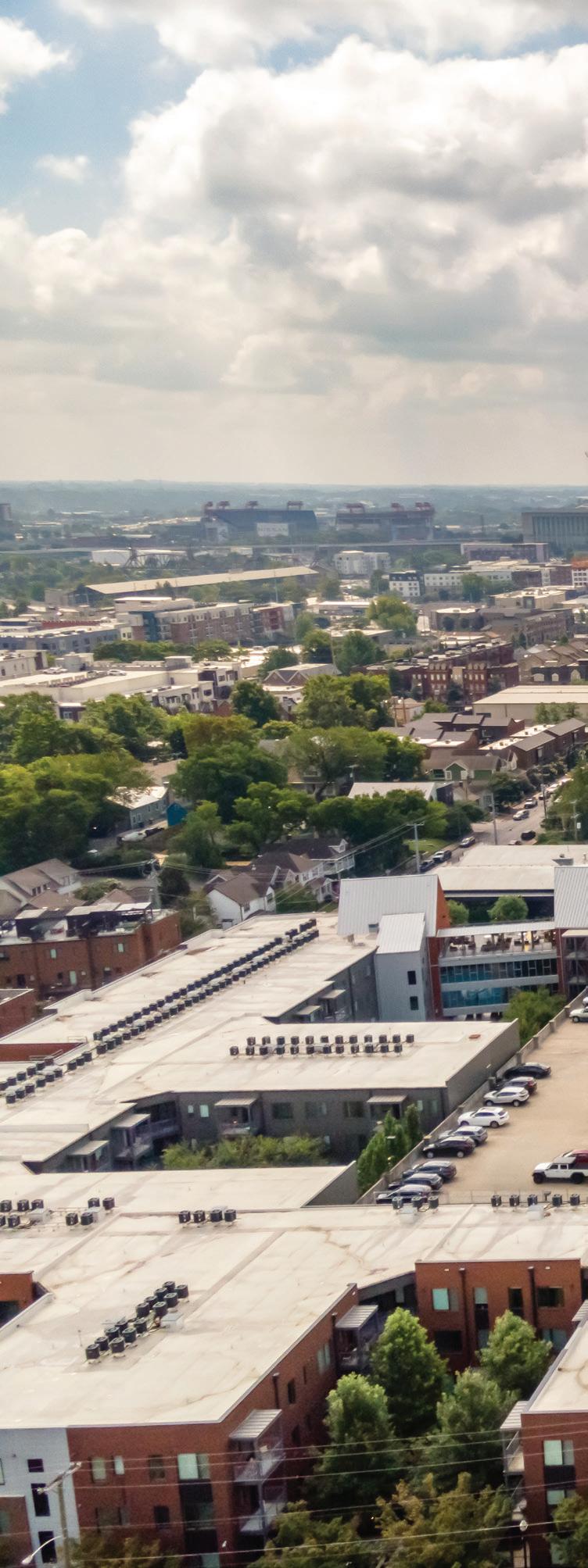 Taylor Place
Photography | Seth Parker
Taylor Place
Photography | Seth Parker

Smith Gee Studio embraces the essence of Nashville’s vibrant evolution, leveraging our firms 15 years of experience in design to create spaces that seamlessly integrate with the spirit of this rapidly growing city. Founded at the inception of Nashville’s boom, our team is rooted in the local culture and have witnessed its transformation from a small town to a national destination.
In the midst of Nashville’s changing landscape, we prioritize understanding the desires and preferences of the new wave of residents arriving from cities like Los Angeles, Chicago, San Francisco, San Diego, and New York. Our mission is to design spaces that resonate with the diverse needs of Nashville’s residents.
We have partnered with Willow Bridge Residential to develop a comprehensive survey spanning multiple topics and interests of their apartment dwellers.
Allowing us to understand the urban Nashville user in a more in-depth and comprehensive way. Through this data we are able to identify opportunities for efficiency and create buildings that truly respond to market needs.
We also acknowledge the responsibility to design buildings that not only stand out but also adapt to the changing generations of users.
As stewards of Nashville’s architectural landscape, we recognize the importance of designing spaces that resonate with the people who inhabit them. By incorporating both our deep local knowledge and cutting-edge data insights we can navigate the city’s rapid growth with our clients. This will ensure that our designs not only adapt, but also contribute to the evolving lifestyle of its residents.
Smith Gee Studio is committed to remaining at the forefront of Nashville’s evolution, ensuring our designs not only reflect the city’s dynamic spirit but also contribute to its ongoing legacy.


Our team is rooted in the local culture and have witnessed its transformation from a small town to a national destination.

As environmental consciousness continues to grow among residents, sustainability and walkability are emerging as key priorities.
The Covid 19 pandemic reshaped the preferences of today’s residents, particularly in the realm of housing choices. While small studio spaces were once in vogue, there has been a noticeable shift towards larger living quarters, with residents demonstrating a willingness to pay a premium for additional space. This trend underscores the evolving priorities of modern residents, who place a high value on flexibility in all aspects of their lives.
One of the key factors driving this shift is the newfound importance of remote work flexibility. With the ability to work from home becoming increasingly prevalent, residents prioritize living spaces that can accommodate their professional needs while also offering comfort and functionality. This shift is particularly pronounced in Nashville, where residents are adapting to the evolving landscape of remote work opportunities.
As the demographic makeup of residents transitions from Millennials to Generation Z, there is a heightened focus on work-life balance and overall well-being.
This younger cohort places a premium on leading healthy and active lifestyles, emphasizing the importance of amenities and community offerings that support physical and mental wellness.
As environmental consciousness continues to grow among residents, sustainability and walkability are emerging as key priorities. With Nashville experiencing rapid growth, there is a heightened awareness of the need to prioritize sustainable development practices and create pedestrian-friendly neighborhoods. These considerations reflect the evolving values of residents as they seek to contribute to a greener and more livable urban environment.
In summary, the preferences of today’s residents are shaped by a variety of factors, including the impact of the pandemic, shifts in demographics, and a growing emphasis on sustainability and well-being. By understanding and responding to these evolving priorities, developers and property managers can create living spaces that resonate with the needs and values of modern residents in Nashville.
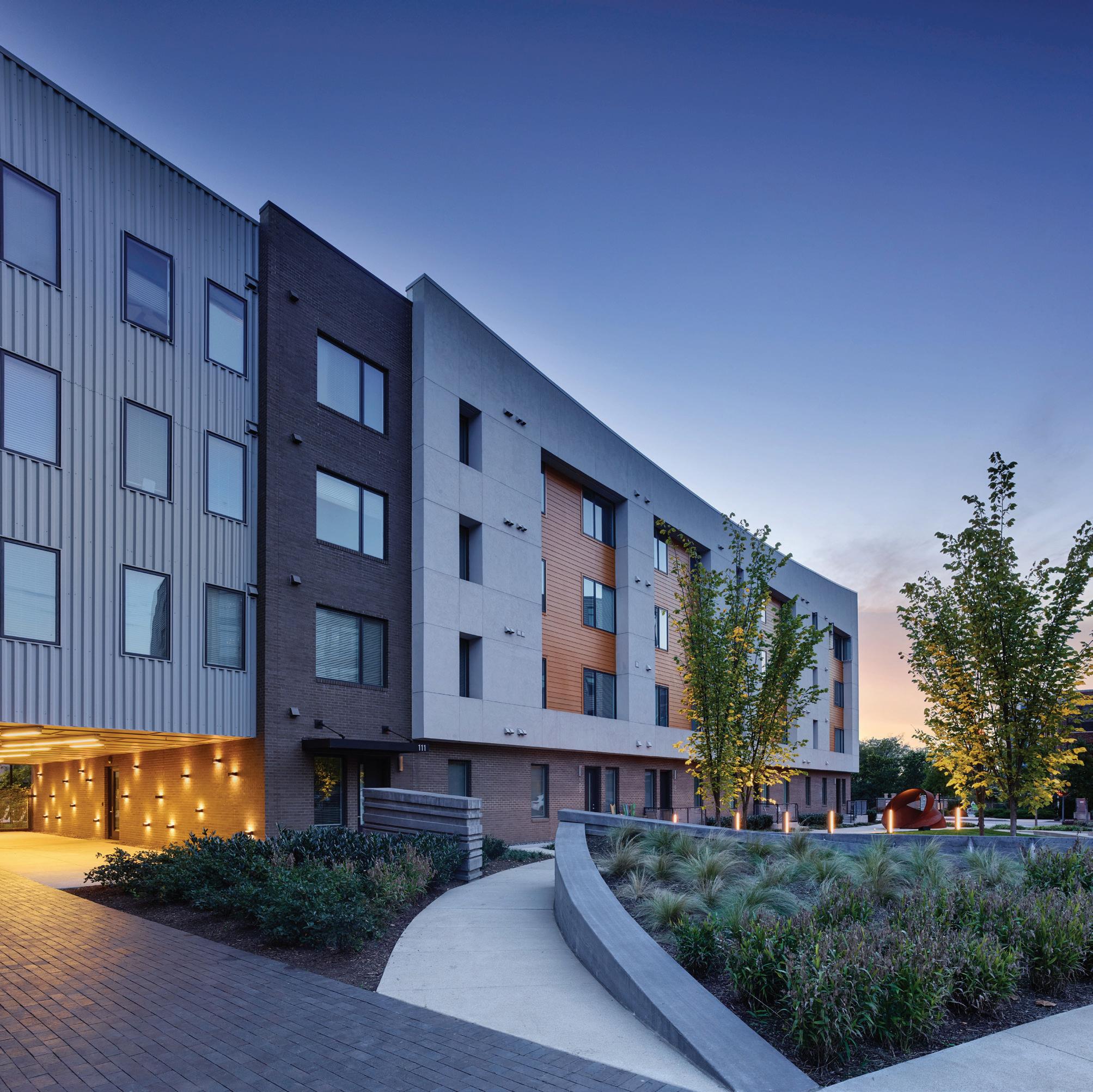
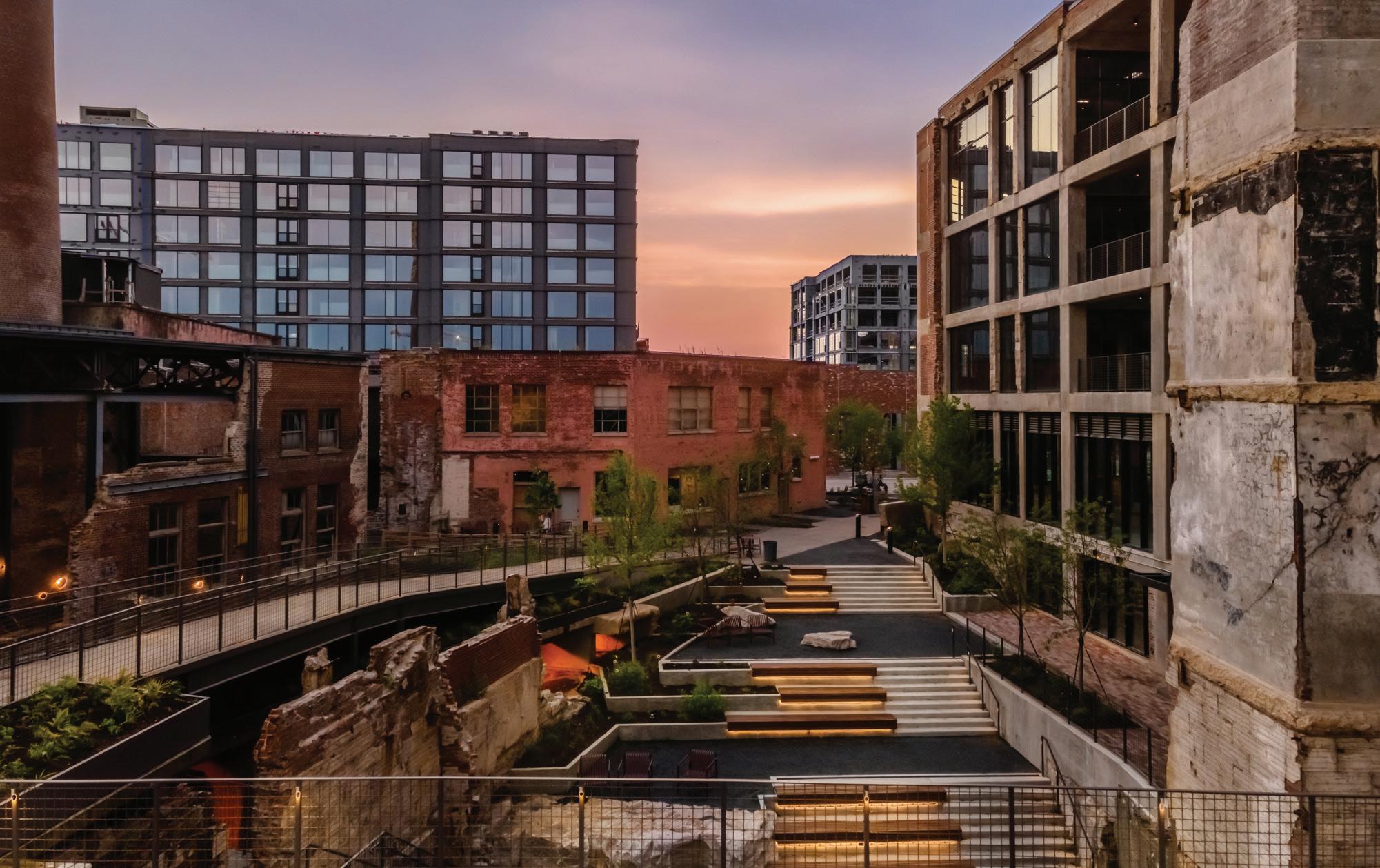
Nashville’s typical urban resident is a 26-35 year old professional making $60k - $89k living on their own in a one bedroom apartment.
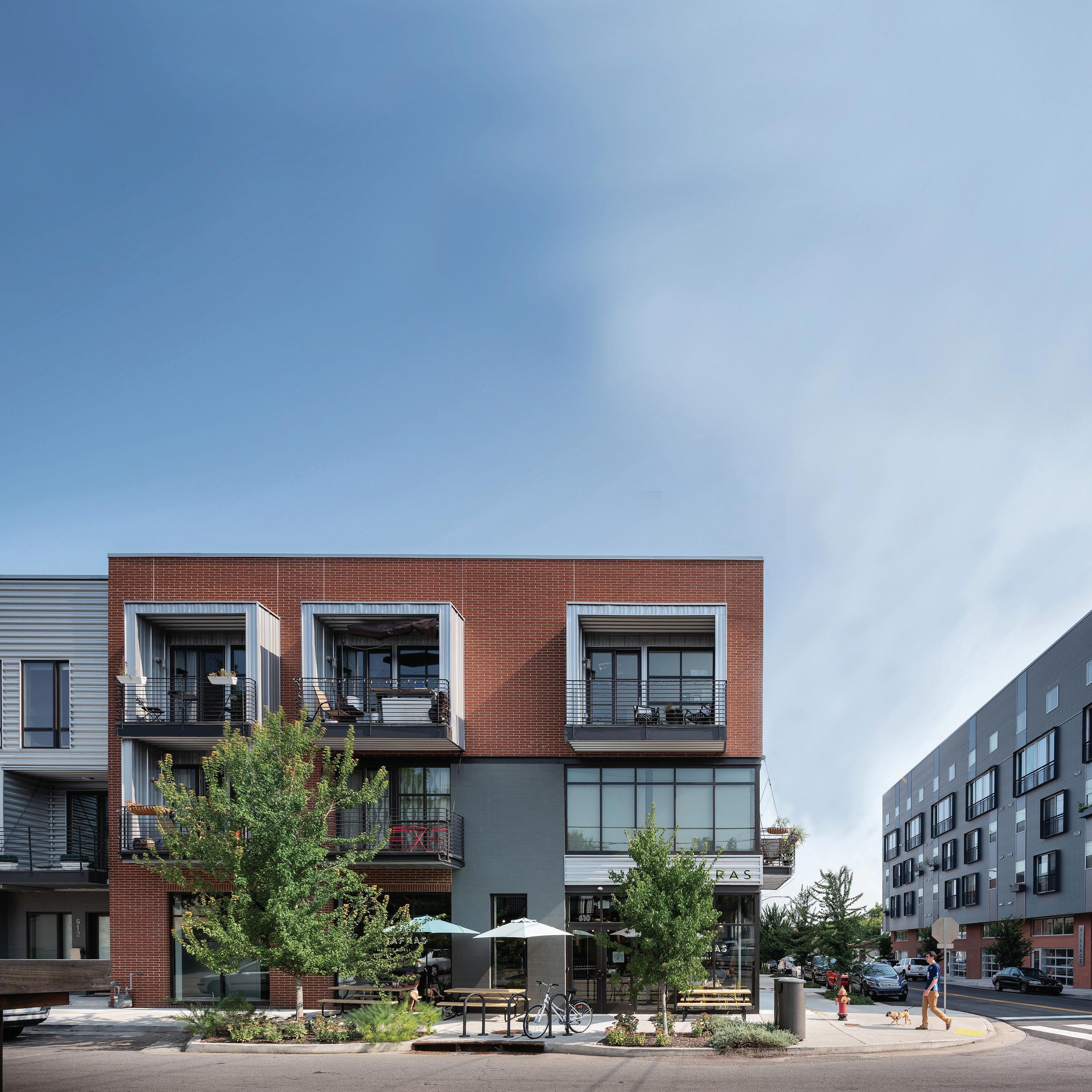

of residents who lease a one bedroom unit live by themselves. of residents who lease a two bedroom unit live with someone else.
1
Studios have long been a unit type that allows residents to pay relatively affordable rent for their own space. But in a post-Covid world, residents are more likely to spend a little more for space that gives them more flexibility.
The rise in remote work has led to the need for more space, specifically office space. There are many ways apartments can adapt to this and while some would say the “Work from home” era is just a fad, it’s likely here to stay when you consider that 28% of people have a hybrid work from home schedule (according to Forbes1). This is reflected in the data we’ve received from residents showing that 68% of residents work from home at least once a week.
In a post-Covid world, residents are more likely to spend a little more for space that gives them flexibility.
Working from home provides a work-life balance that can be healthier for many residents. Reducing the commuting time or not having a commute at all can reduce stress, a valuable bonus to many residents. A National Institutes of Health (NIH) study showed that the more time people spent commuting correlated with higher levels of fatigue and stress, less job and leisure time satisfaction, and poorer mental health.
The highest percentage of remote workers are ages 24-35, which happens to align with the age of the majority of residents living in these urban apartments. This tells us that residents value the flexibility that working remotely provides. Developing more one bedroom + units into the mix for a project could help accommodate these resident needs.
of residents work from home at least once a week.

To effect change, concerted efforts must be directed toward advocating for policies that prioritize walkability and bolster transit services.
Nashville remains heavily reliant on automobiles, despite the absence of mandatory parking requirements for residential buildings under the Downtown Code. Our research indicates a pressing need for re-evaluation, advocating for the inclusion of parking provisions in residential developments. However, this issue extends beyond mere parking considerations; it underscores the broader imperative of fostering walkable neighborhoods and enhancing transit infrastructure.
To effect change, concerted efforts must be directed toward advocating for policies that prioritize walkability and bolster transit services. This entails engaging with city officials, urban planners, and community stakeholders to promote the implementation of measures which create pedestrian-friendly environments and increased density in strategic locations to support transit. Emphasizing the economic, environmental, and social benefits of walkable neighborhoods can serve as a compelling argument for garnering support for such initiatives.
Collaboration between developers, transit authorities, and other public agencies is critical to devising comprehensive strategies to improve transit accessibility and efficiency. This may involve advocating for the concentration of housing near transit routes, the enhancement of existing infrastructure, and investment in alternative modes of transit such as cycling lanes and shared mobility services.
Fostering public awareness and participation is essential in galvanizing support for walkability initiatives. Through community outreach programs, educational campaigns, and participatory planning processes, residents can be empowered to advocate for pedestrian-friendly urban environments.
Ultimately, by championing the cause of walkable neighborhoods and advocating for enhanced transit services, we can contribute to the creation of more sustainable, livable, and equitable communities throughout Nashville.
Riverfront Park & Ascend Amphitheater Photography | Matthew Carbone
83% of urban residents have a 15 minute or less commute time. This tells us that people are primarily working from home or within the downtown core.
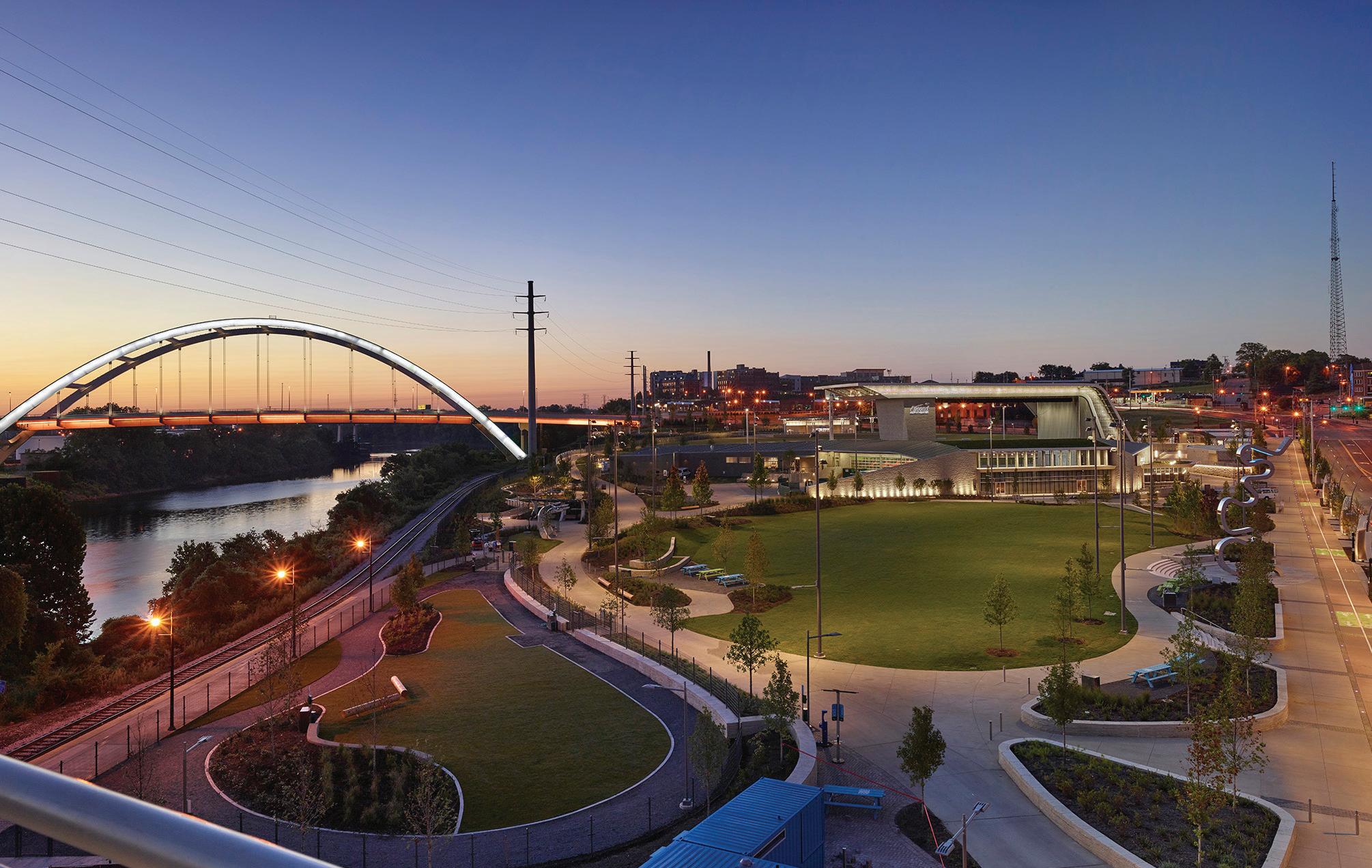
DO RESIDENTS WANT RECYCLING IN THEIR BUILDING? 85% Yes 15% No DO RESIDENTS WANT EV CHARGING? 64% 36% No Yes
Riverfront Park and Ascend Amphitheater Photography | Matthew Carbone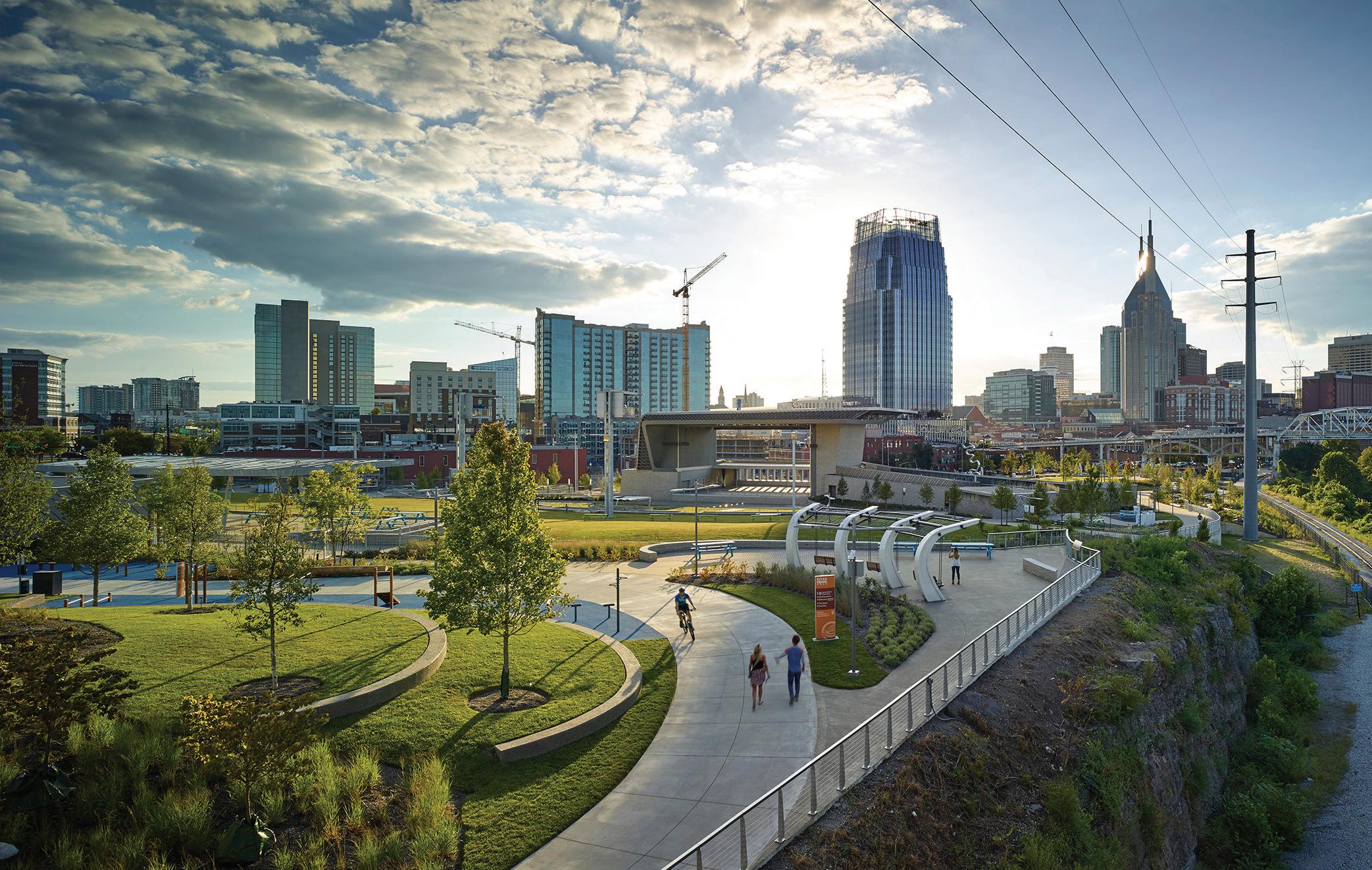
In the past, small studios were sought after for their affordability, especially among younger generations looking to live in Nashville’s urban neighborhoods. Many occupants spent much of their time outside their living space, making compact studios a practical choice. However, the landscape has shifted with the increasing prevalence of remote work, rising interest rates, and the increased costs of buying a home.
One bedroom units now serve as a cornerstone in meeting the evolving needs of residents, offering both space and functionality. With the transition towards work from home, individuals increasingly seek residences that optimize every square inch, providing a balance between comfort and efficiency.
One-bedroom units now serve as a cornerstone in meeting the evolving needs of residents, offering both space and functionality.
In response to the demand for convenience and connectivity, residents now seek greater control over their living spaces. The integration of smart technologies into residential designs has become essential, allowing tenants to manage various aspects of their homes remotely via mobile devices. This emphasis on smart features not only enhances the overall user experience but also aligns with the evolving preferences of modern renters seeking tech-savvy living environments.
This section delves into the integral role of maximizing livability for occupants, emphasizing the importance of thoughtful design solutions.


95% of residents indicated they prefer a ceiling fan in the bedroom.
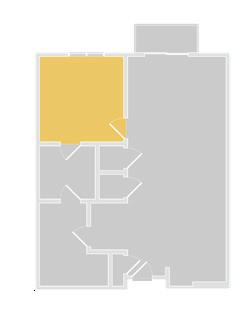
88% of residents expect to have at least one operable window in their apartment
34% of residents prefer the operable window to be in the bedroom
50% of residents favor carpet in the bedroom
50% of residents prefer no carpet in the bedroom
 Athena at the Park Rendering | ARX Creative
Athena at the Park Rendering | ARX Creative
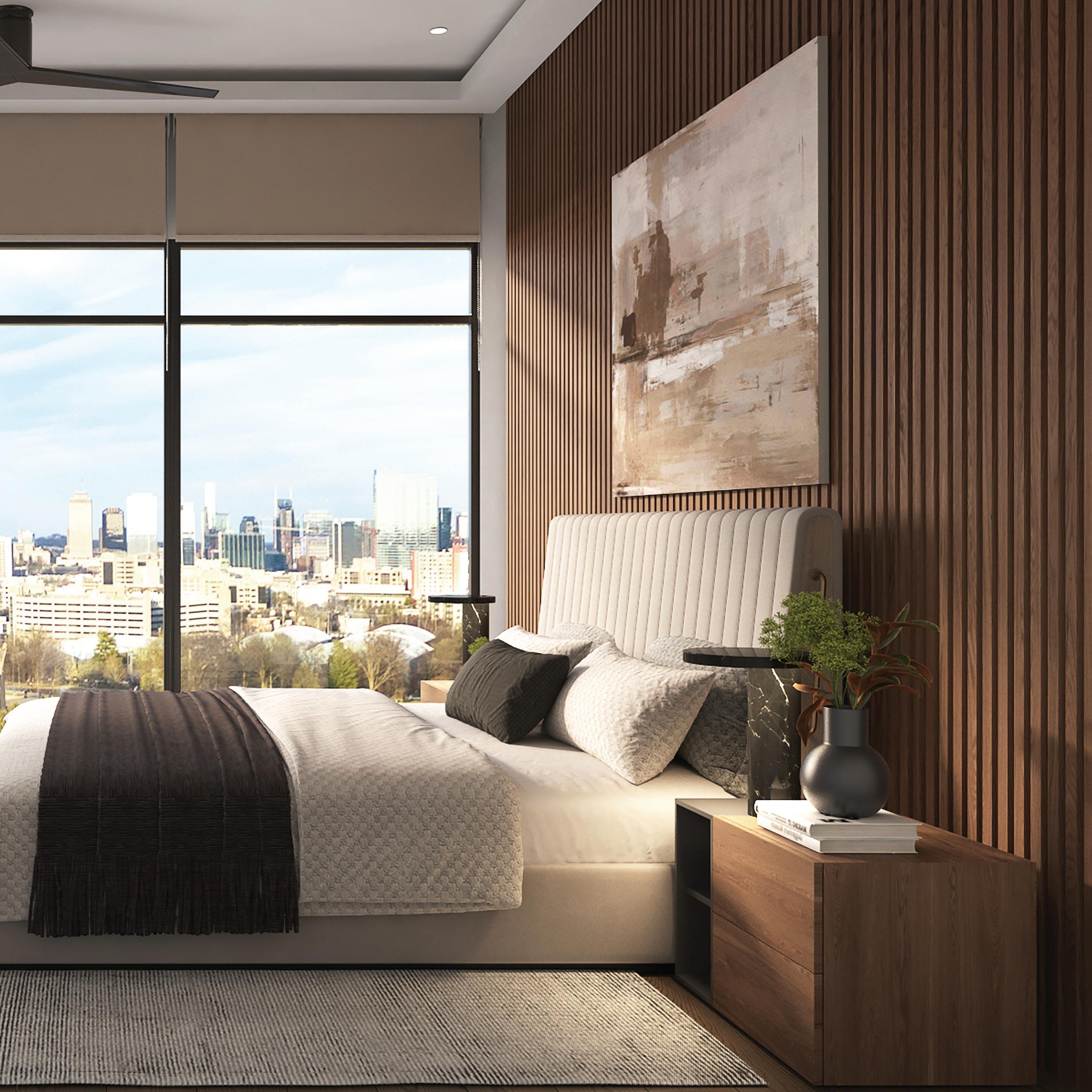

86% of residents indicated they prefer a ceiling fan in the living room.
88% of residents expect to have at least one operable window in their apartment.
66% of residents prefer the operable window to be in the living room.
Residents indicated they rank the importance of having a balcony as a 4.17 on a scale of 1-5


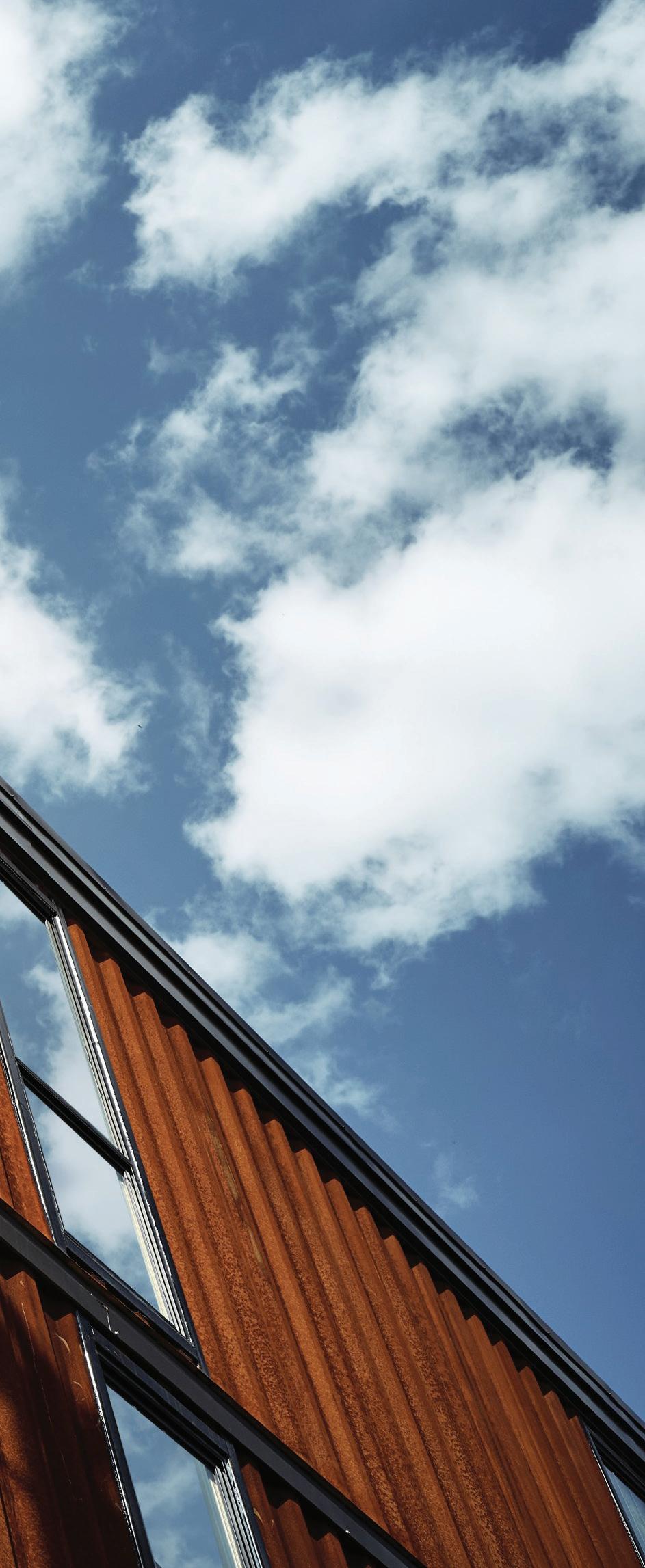
of residents use their balcony at least once a week.
Due to Nashville’s limited walkability and transit options, apartment balconies have become a priority for residents. These outdoor spaces offer quick and convenient retreats, allowing occupants to bask in sunshine and fresh air amidst the urban landscape. Despite the potential cost implications associated with incorporating balconies into projects, their inherent value to users justifies the investment. Therefore, we can adopt innovative approaches to balcony design within the building that are both cost effective and aesthetically pleasing.
of residents cook their meals at home at least 3 days a week.83 Freight Photography | Matthew Carbone


Residents ranked the importance of having a water and ice dispenser as a 4.37 on a scale of 1-5
55% of residents cook meals at home 3-5 days of the week.
The #1 priority when choosing an apartment is its proximity to grocery stores and restaurants
Residents ranked the importance of having an island/eat-in kitchen as a 4.11 on a scale of 1-5
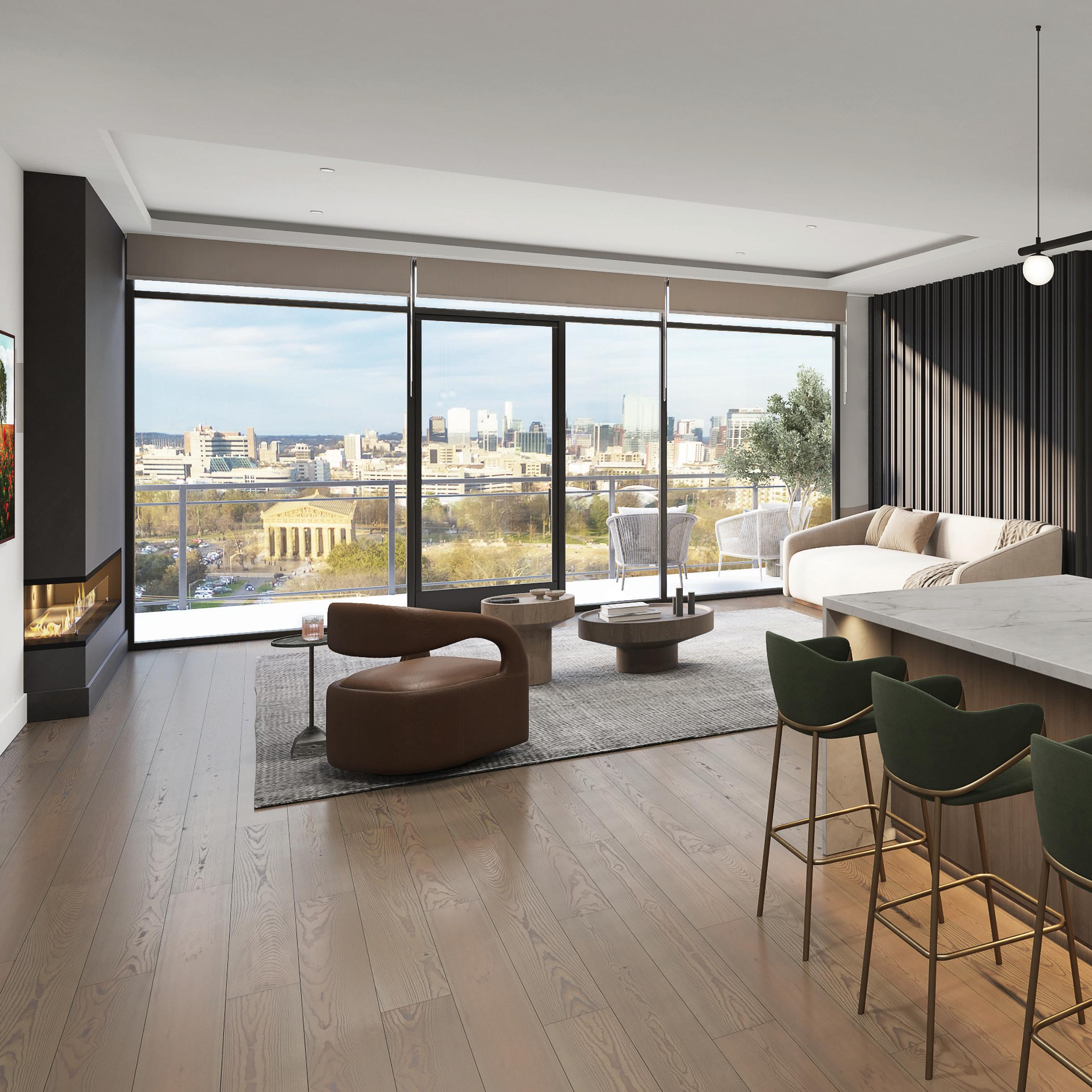 Athena at the Park Rendering | ARX Creative
Athena at the Park Rendering | ARX Creative
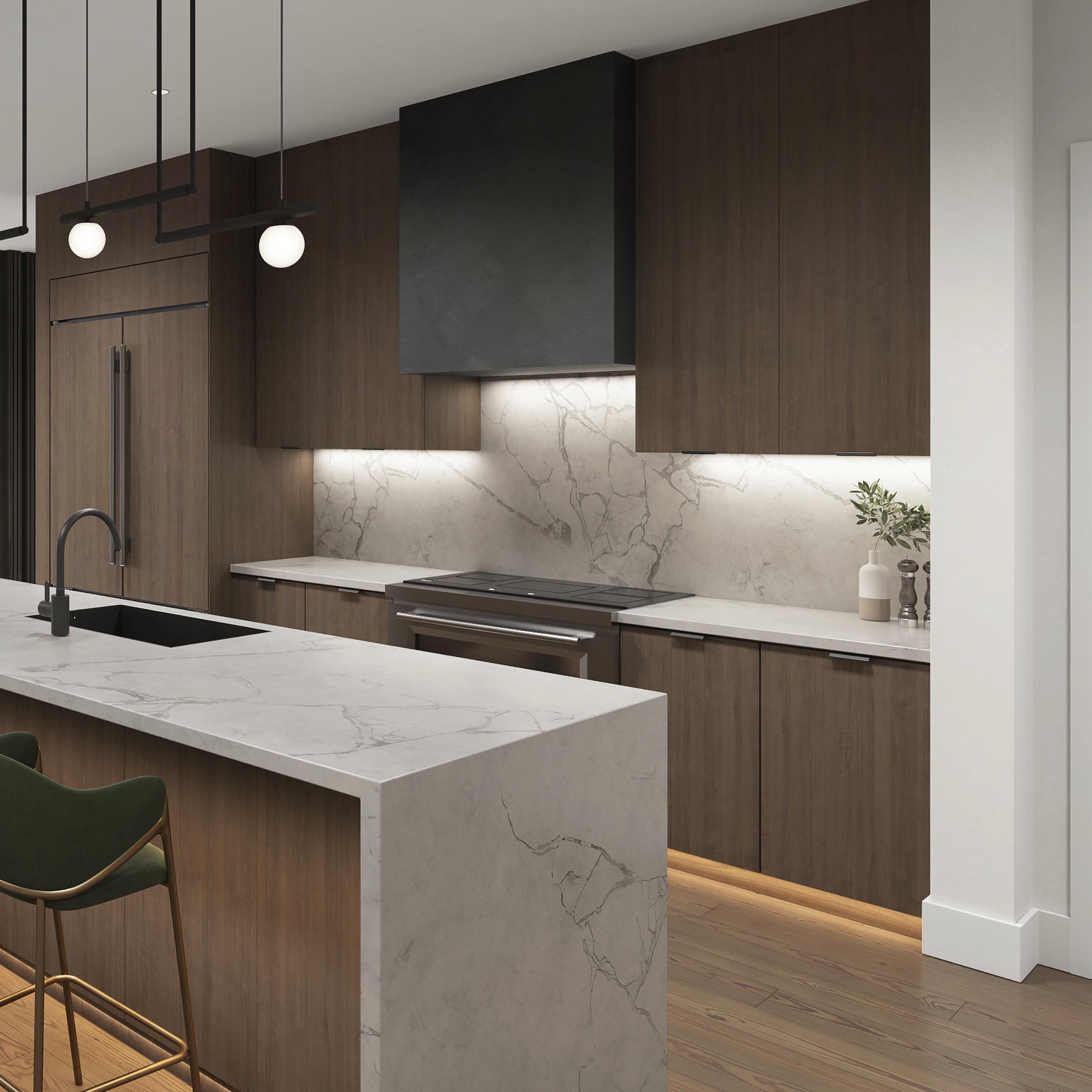
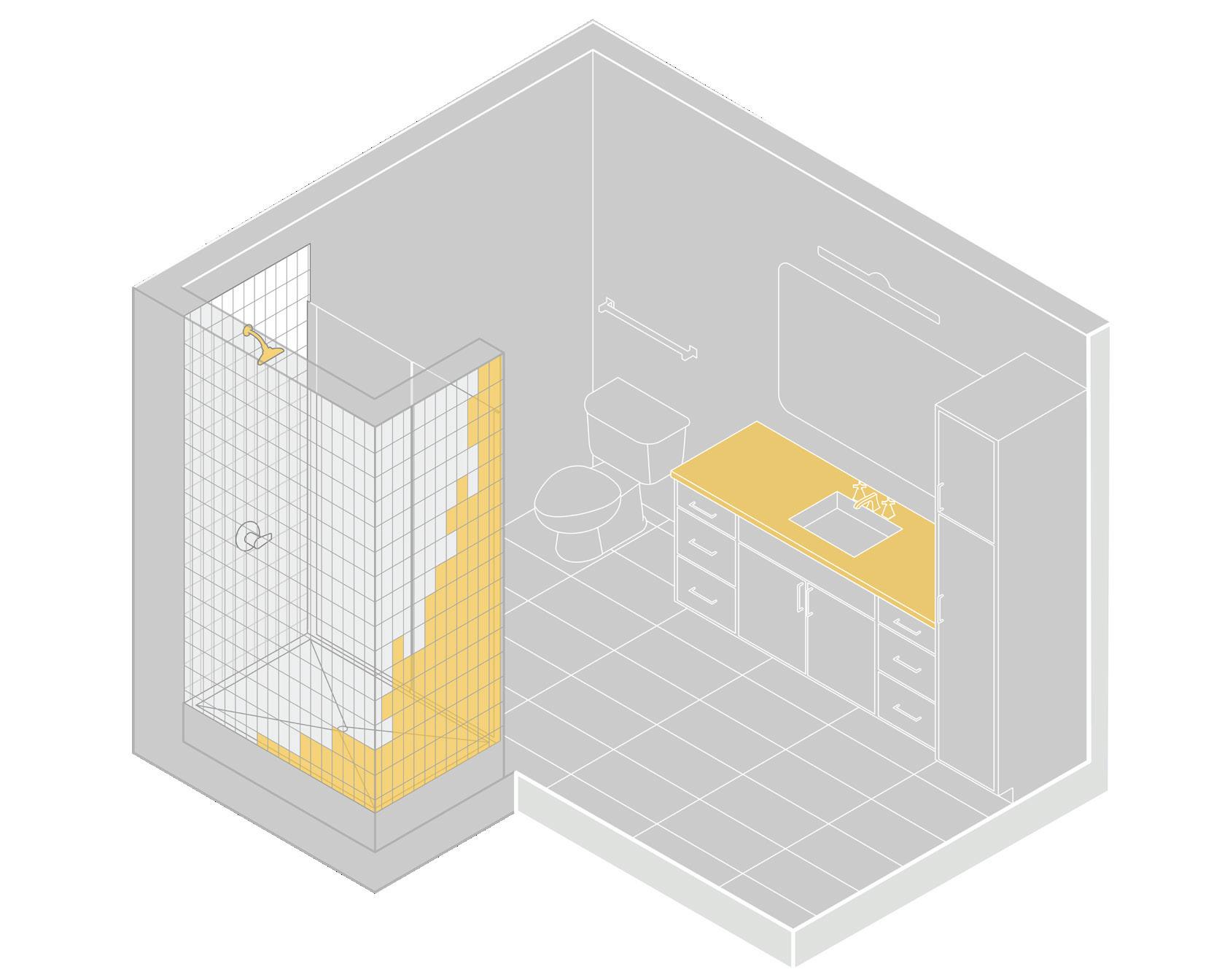
54% of residents prefer a tub/shower combo over a stand up shower

66% of residents prefer a single sink with more counter space rather than two sinks
85% of residents prefer tile walls over fiberglass
Does resident age affect if they prefer tub vs shower?
Whether a resident prefers a stand up shower or a tub changes as age increases. Older residents tend to prefer a stand up shower while the younger residents tend to prefer the tub/shower combo.
Bathrooms serve as quintessential spaces to showcase the luxury and sophistication of a product. Traditionally, doublebowl sinks have been synonymous with opulence. However, in today's emerging market, there's a shift towards prioritizing functionality over pure aesthetics. This younger demographic favors single-bowl sinks that offer ample counter space for practical storage solutions.
The choice between a tub/shower combination versus a standalone shower is indicative of this market's emphasis on versatility and utility. While the tub/shower option may lack the immediate visual appeal of a standalone shower, it provides greater flexibility to accommodate different bathing preferences and household needs.
The preference for tile surfaces in these areas underscores the desire to elevate functional spaces with luxurious finishes. Unlike drop-in or fiberglass alternatives, tile exudes an air of sophistication while maintaining durability and ease of maintenance. This shift towards tile reflects the market's inclination to the aesthetic appeal of otherwise utilitarian spaces without compromising functionality.
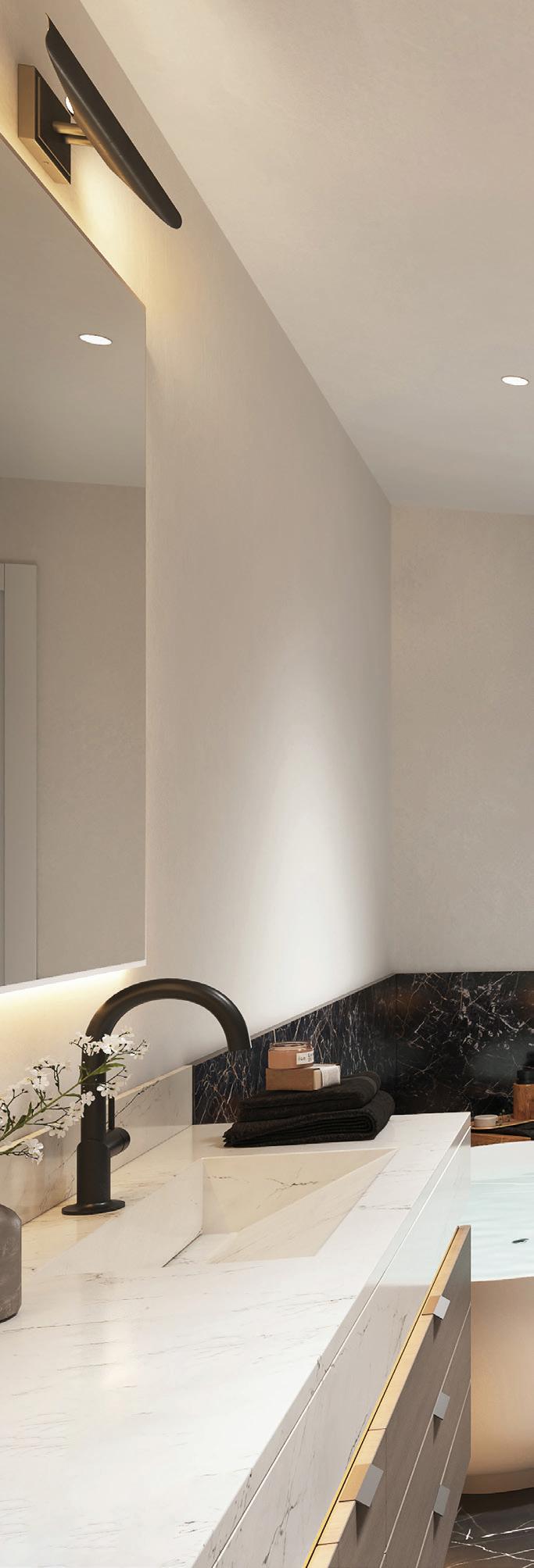

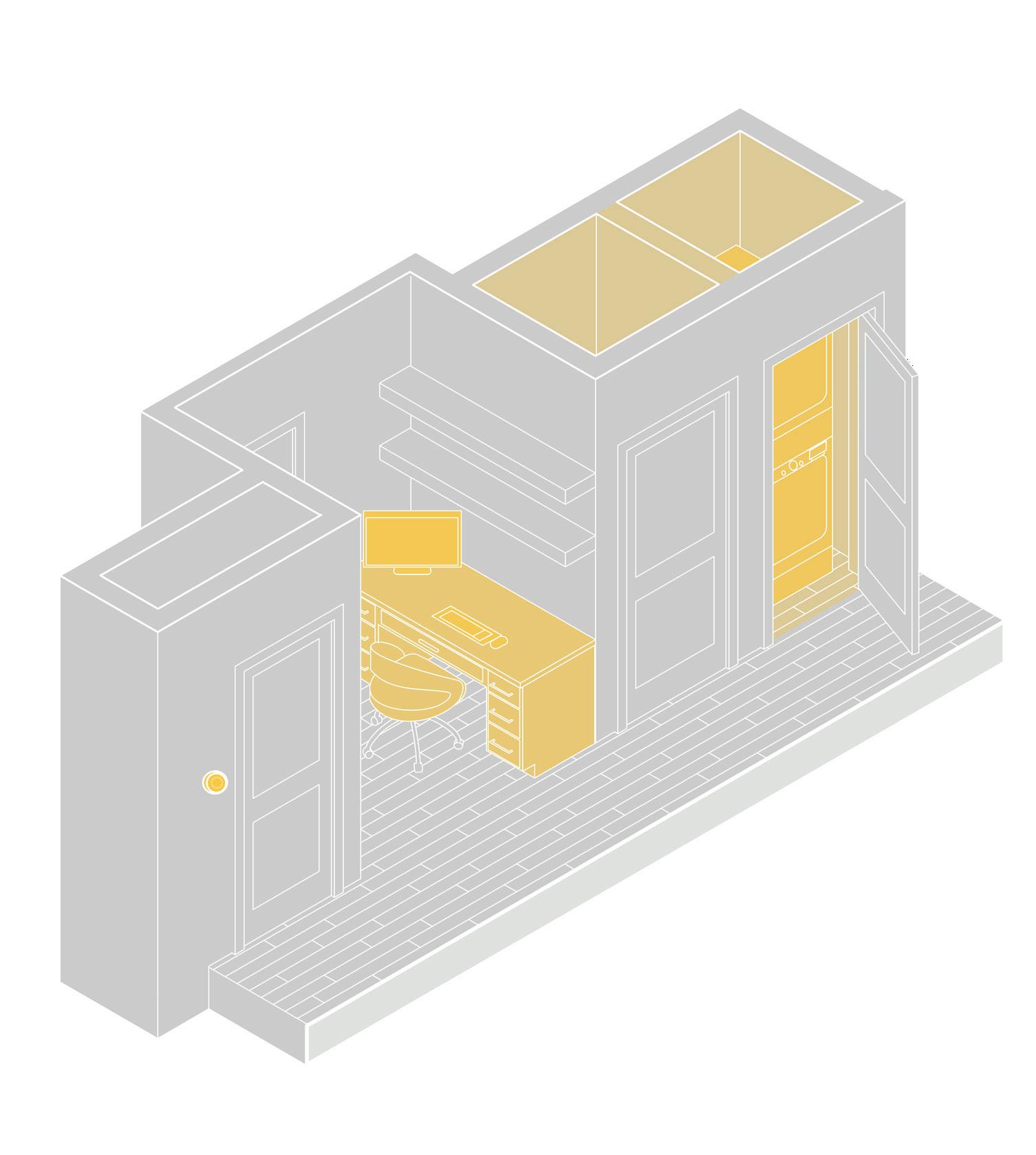
64% of residents prefer a stacked washer/dryer with extra storage available over a side-by-side washer/dryer

64% of residents find work from home spaces important when choosing an apartment
While 42% of residents feel like they have enough storage in their unit, only 24% of people selected rentable storage as one of the top three amenities they preferred when looking for an apartment.
82% of residents indicated the most sought after “smart” home feature is a smart thermostat
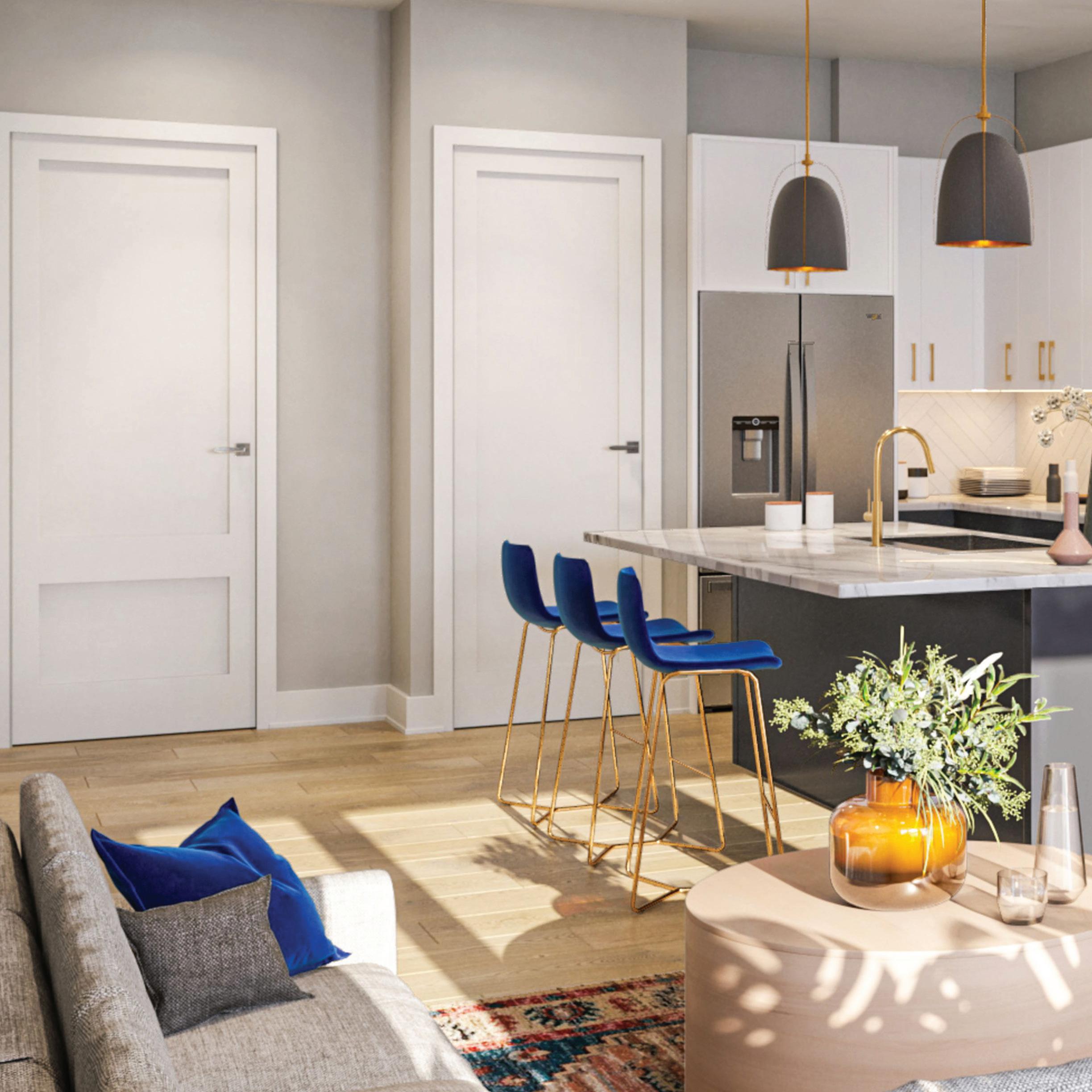
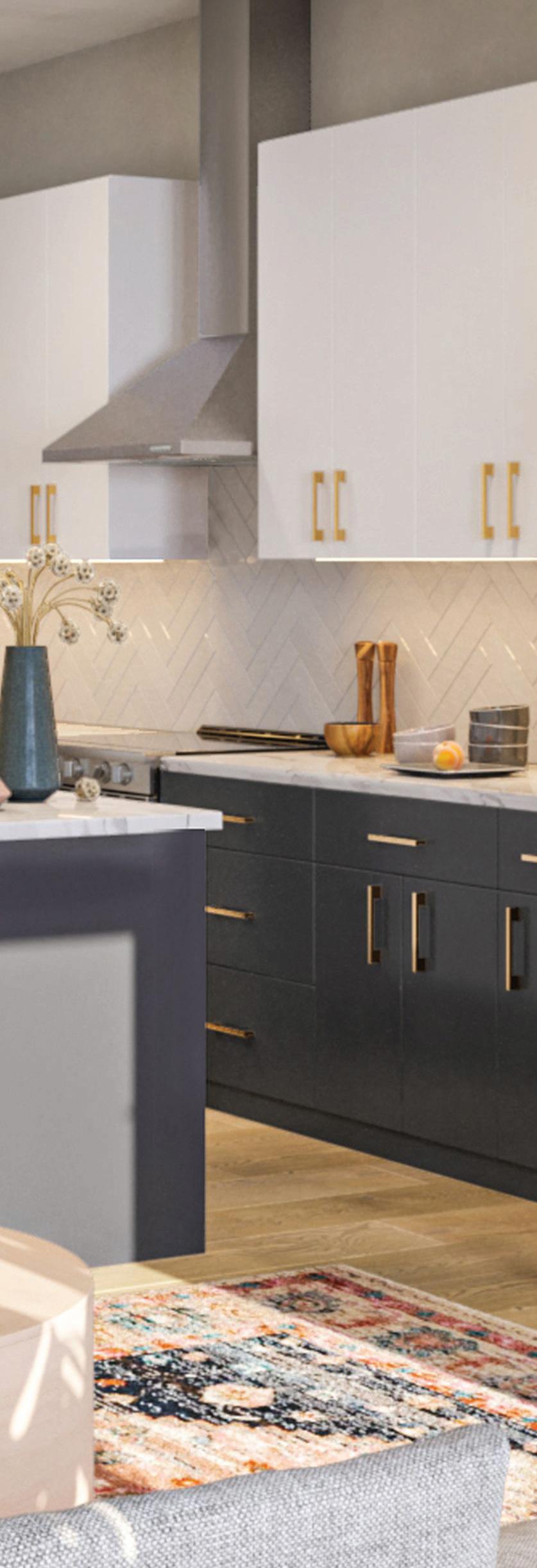
HOW DO RESIDENTS PREFER TO ACCESS THEIR APARTMENT?
DIGITAL KEY (PHONE APP)
PHYSICAL KEY
PUNCH CODE (KEY PAD) 14% OTHER 2%
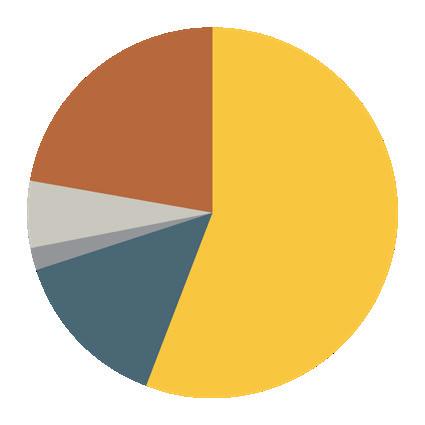
WHAT “SMART” HOME FEATURES DO RESIDENTS WANT IN THEIR APARTMENT?
SMART TOUCH FAUCET 8%
MOTORIZED BLINDS 13%
DIGITAL UNIT ENTRY (PHONE APP)

Key amenity spaces such as fitness centers, pools, and rooftop lounges serve as focal points for creating an upscale ambiance that resonates with residents.
In the last decade, the expectations of today’s residents have undergone a significant transformation. Modern residents not only seek living spaces that embody the spirit of the current era but also crave a luxurious living experience akin to that of upscale hotels. It’s no longer sufficient for amenities to merely complement the residential units. They are now expected to offer a distinct ambiance, providing residents with additional functional and leisure spaces.
The demand for a hospitality-inspired atmosphere within residential complexes has become paramount in meeting the discerning preferences of the urban Nashville dweller. With the shift towards prioritizing health, wellness, and remote work, a unique opportunity arises to redefine and elevate traditional amenity offerings. While clubrooms have traditionally been considered essential amenities, our research indicates that they are underutilized. In contrast, amenities catering to health and fitness experiences are witnessing increased usage, reflecting today’s lifestyle choices of residents.
This underscores the evolving preference for amenities that strike a balance between functionality and luxury, aligning with the desires of today’s residents.
Key amenity spaces such as fitness centers, pools, and rooftop lounges serve as focal points for creating an upscale ambiance that resonates with residents. Additionally, there is a growing demand for co-working spaces within residential complexes, catering to the needs of remote workers and entrepreneurs. These changing demands provide an opportunity to reimagine traditional clubrooms as flexible spaces that seamlessly integrate both leisure and work functions. By fostering adaptability and versatility in amenity design, developers can enhance the overall resident experience and differentiate their properties in a competitive market landscape.
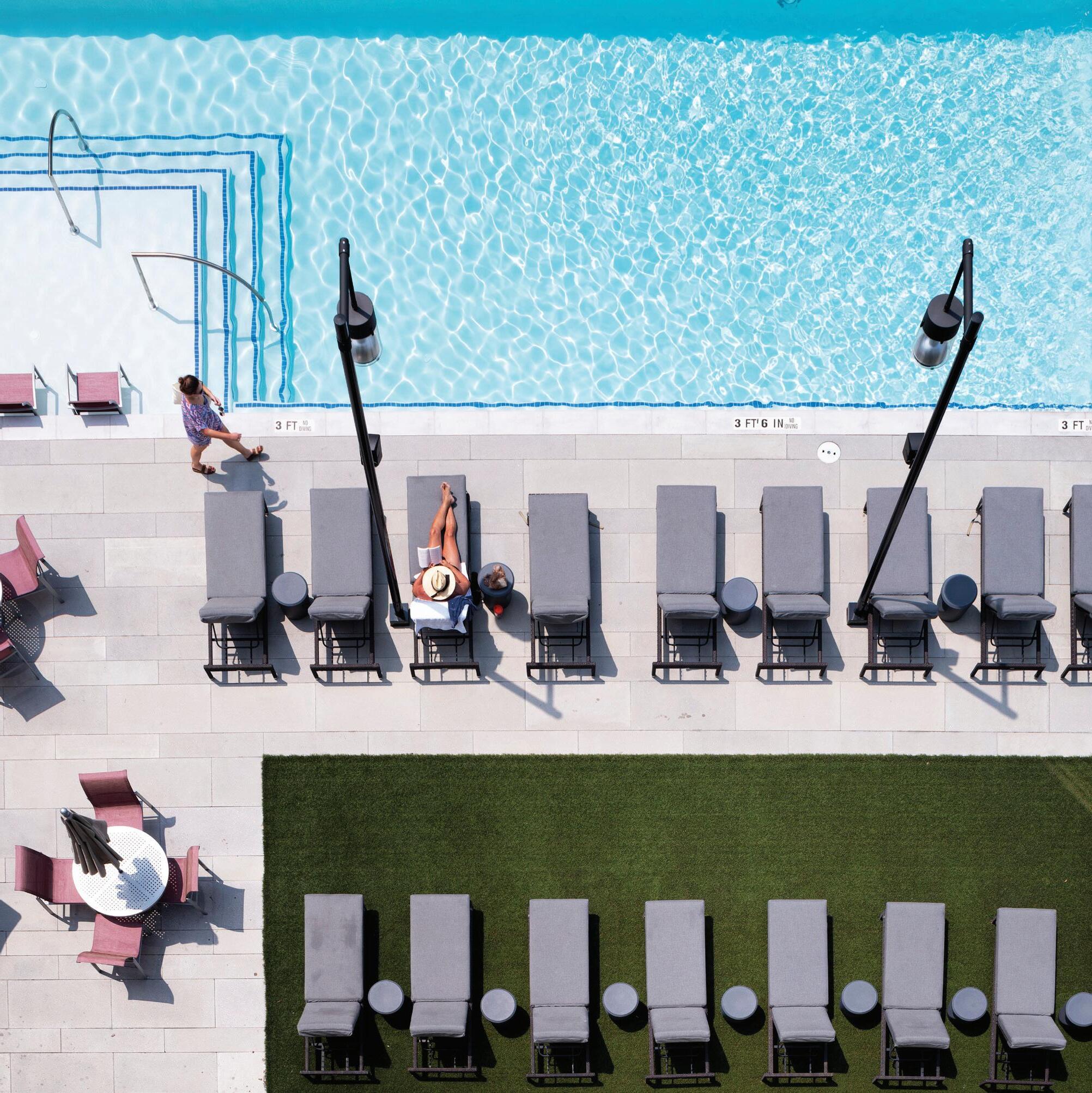
OF RESIDENTS USE THE FITNESS CENTER AT LEAST ONCE A WEEK

Over half of the residents surveyed indicate they use their fitness center multiple times per week. This emphasizes the need to shift focus onto the fitness center and other related amenities. Providing space for workout classes and programming for such activities allows users other options for maintaining a healthy lifestyle.
The contemporary resident in Nashville places a premium on amenities that reflect the current era and provide a luxurious experience reminiscent of a hotel. The incorporation of flexible spaces, particularly in response to the growing trend of remote work, is integral to meeting the diverse needs of residents. In this competitive market, developments that prioritize adaptability and variety in amenity spaces are better positioned to attract and retain the modern workforce in Nashville.
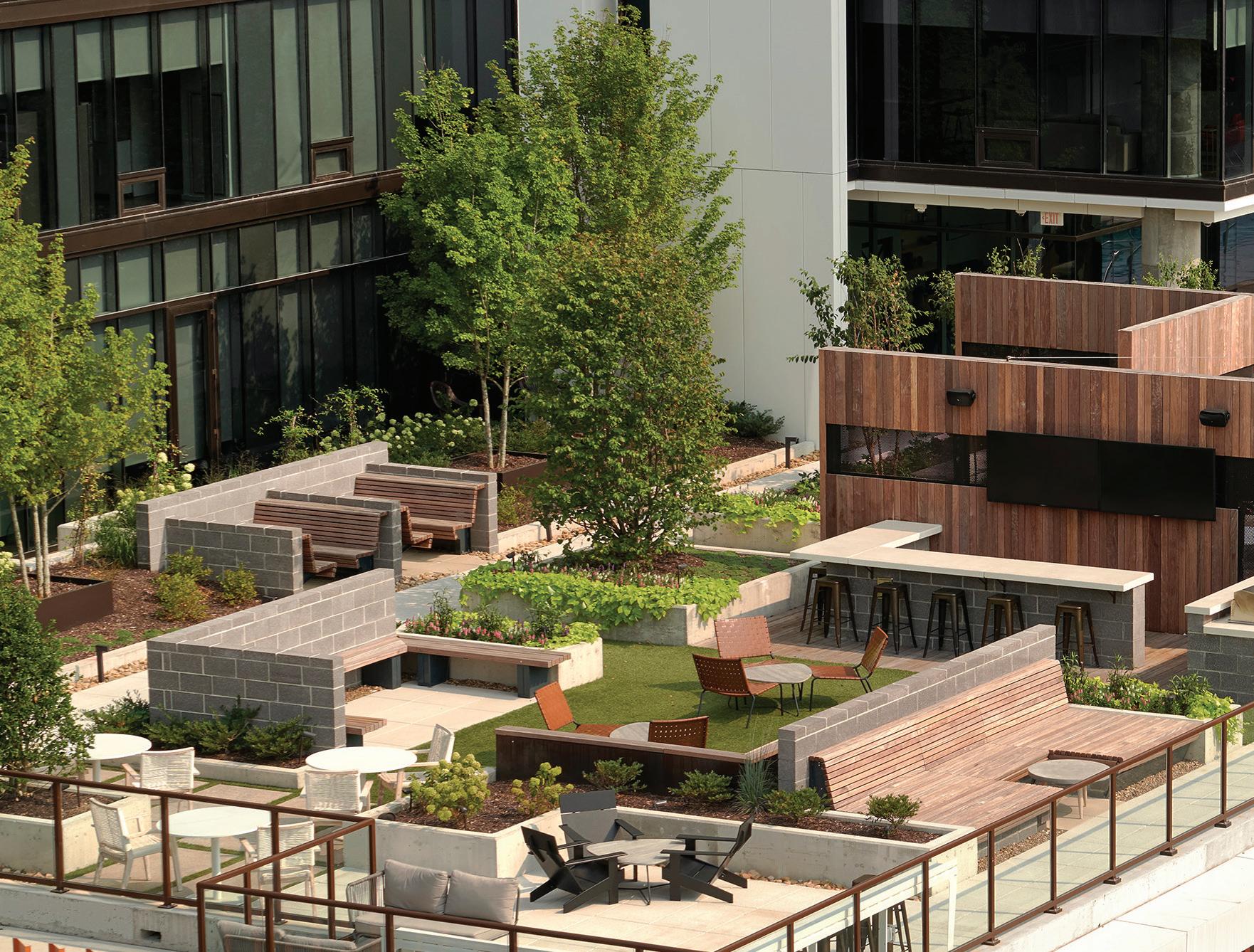




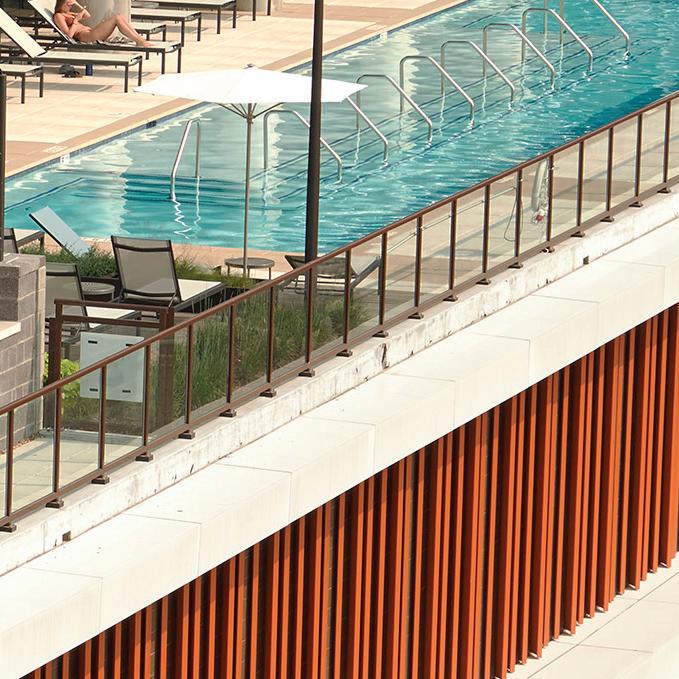
Residents who embrace remote work often crave diversity in their daily routines, seeking environments that adapt to their evolving needs. To accommodate this dynamic lifestyle, a thriving apartment community should offer a range of options, empowering tenants to tailor their workspace according to their daily preferences. This might entail the flexibility to work from the comfort of their unit one day, utilize the communal co-working space on another, or venture to a local coffee shop for a change of scenery.
Given the importance of flexibility to remote workers, it’s imperative that the provided spaces are equally adaptable. Adaptability is key whether it’s an additional room within the unit that seamlessly transitions from an office to a guest room or a clubroom that effortlessly converts into a conducive co-working environment. Providing spaces that mirror the user’s flexibility and value for variety is essential, as remote workers often seek environments that offer diverse settings to enrich their workday experience.
The trifecta of flexibility, functionality, and luxury forms the cornerstone of desirable apartment amenities, with pool, fitness, and rooftop facilities emerging as top priorities for prospective residents. While fitness amenities serve a functional purpose, pools and rooftop spaces are synonymous with luxury, offering residents a premium living experience.
The trifecta of flexibility, functionality, and luxury forms the cornerstone of desirable apartment amenities.
A flexible clubroom that seamlessly transitions between a recreational space and a co-working hub addresses the evolving needs of remote workers who desire the ambiance of a coffee shop infused with the productivity of an office environment. This fusion of functionality and comfort resonates deeply with individuals seeking a versatile workspace that complements their lifestyle.
Furthermore, the allure of apartment living lies in the access to amenities that homeowners often lack, reinforcing the notion that the provided amenities significantly enhance the appeal and value proposition of apartment living. By embracing flexibility, functionality, and luxury in amenity offerings, apartment communities can cater to modern residents’ diverse needs and preferences, making apartment living an attractive and fulfilling choice for remote workers and urban dwellers.
Hume House Photography | Seth ParkerWould use amenity co-work space.



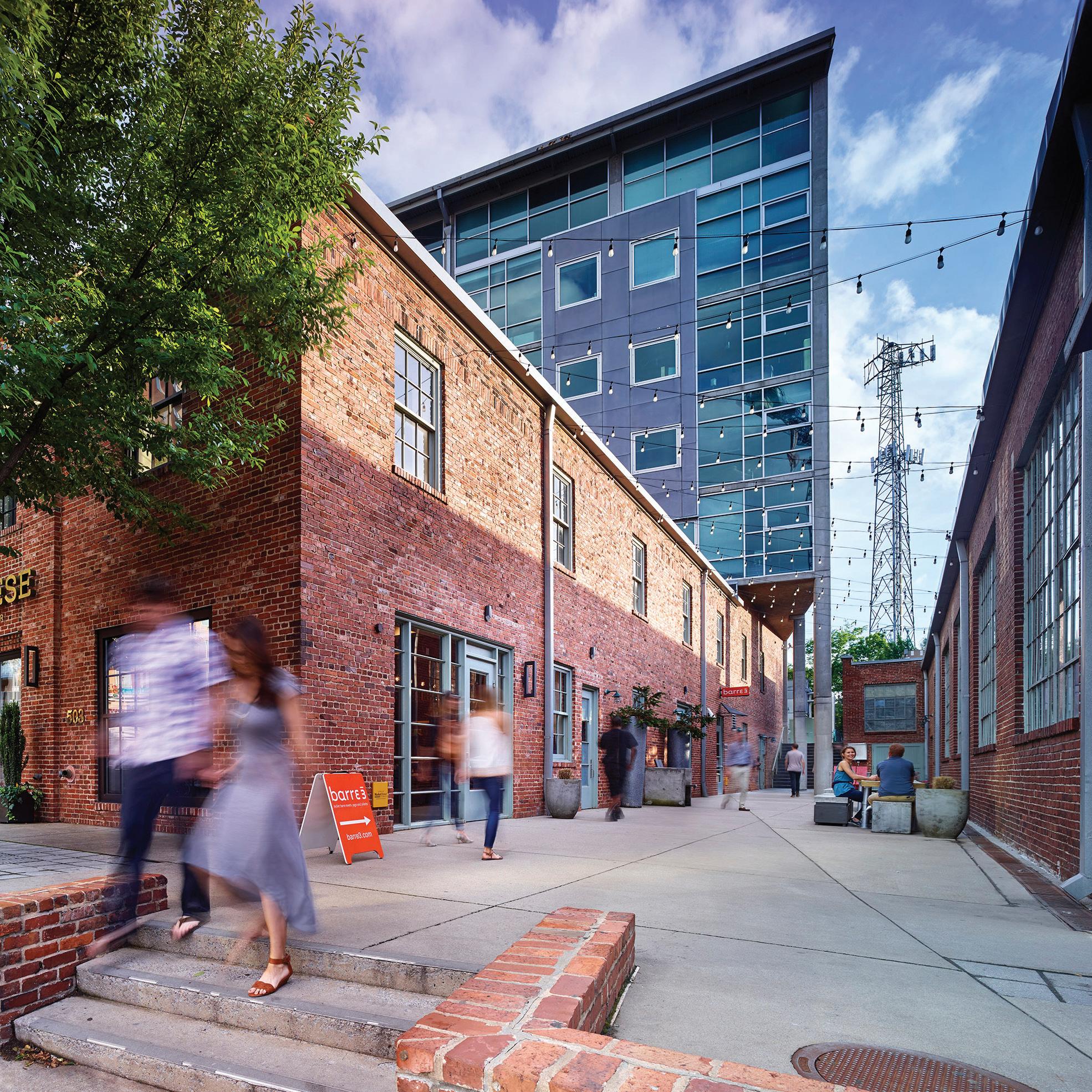

The rise in online shopping has resulted in a significant increase in package deliveries, putting strain on existing package room facilities in residential complexes. Current package rooms are often too small to handle the growing volume of deliveries.
Expanding package room sizes is crucial to address logistical challenges, enhance operational efficiency, and improve resident satisfaction.
With larger package rooms comes an increased need for cold storage. More people are ordering groceries and meal packages, stressing the need for refrigeration within the package areas.
Innovative solutions such as automated retrieval systems and designated storage areas are becoming more common. Ultimately streamlining package management processes and adapting to the demands of e-commerce.
How many packages do tenants receive per week?
0-1 WEEKLY 43%
6+ WEEKLY 6% 4-5 WEEKLY 9%
2-3 WEEKLY 42%
Hume House Photography | Seth ParkerNeighborhoods serve as extensions of the amenities offered by residential buildings, enriching the overall living experience for residents.
A defining aspect of Nashville’s charm lies in the rich tapestry of neighborhoods that constitutes its urban core. These neighborhoods play a pivotal role in shaping the city’s multifaceted identity, offering diverse experiences tailored to various interests and lifestyles. Characterized by a blend of cultural influences, architectural styles, and a vibrant mix of residents, Nashville is an inclusive haven that welcomes individuals from all walks of life.
While survey data provides valuable insights into the preferences of the average Nashvillian, it’s essential to recognize that each neighborhood possesses its own distinct character and preferences. These unique qualities reflect the nuanced needs and desires of the community, which naturally vary from one neighborhood to another.
Moreover, neighborhoods serve as extensions of the amenities offered by residential buildings, enriching the overall living experience for residents.
While developers can design and tailor spaces within buildings to cater to the needs of tenants, the inherent flavor and ambiance of each location adds an additional layer of appeal.
The presence of essential amenities such as grocery stores, retail outlets, and restaurants within neighborhoods further enhances the appeal of apartment communities, fostering a sense of convenience and community cohesion. These amenities not only complement residential offerings but also contribute to the vibrancy and livability of the surrounding areas.
Ultimately, the priorities and preferences of different neighborhoods are reflected through the discerning choices of tenants. By understanding and adapting to each community’s unique characteristics, developers and property managers can create thriving residential environments that resonate deeply with residents and contribute to the overall allure of Nashville’s urban landscape.
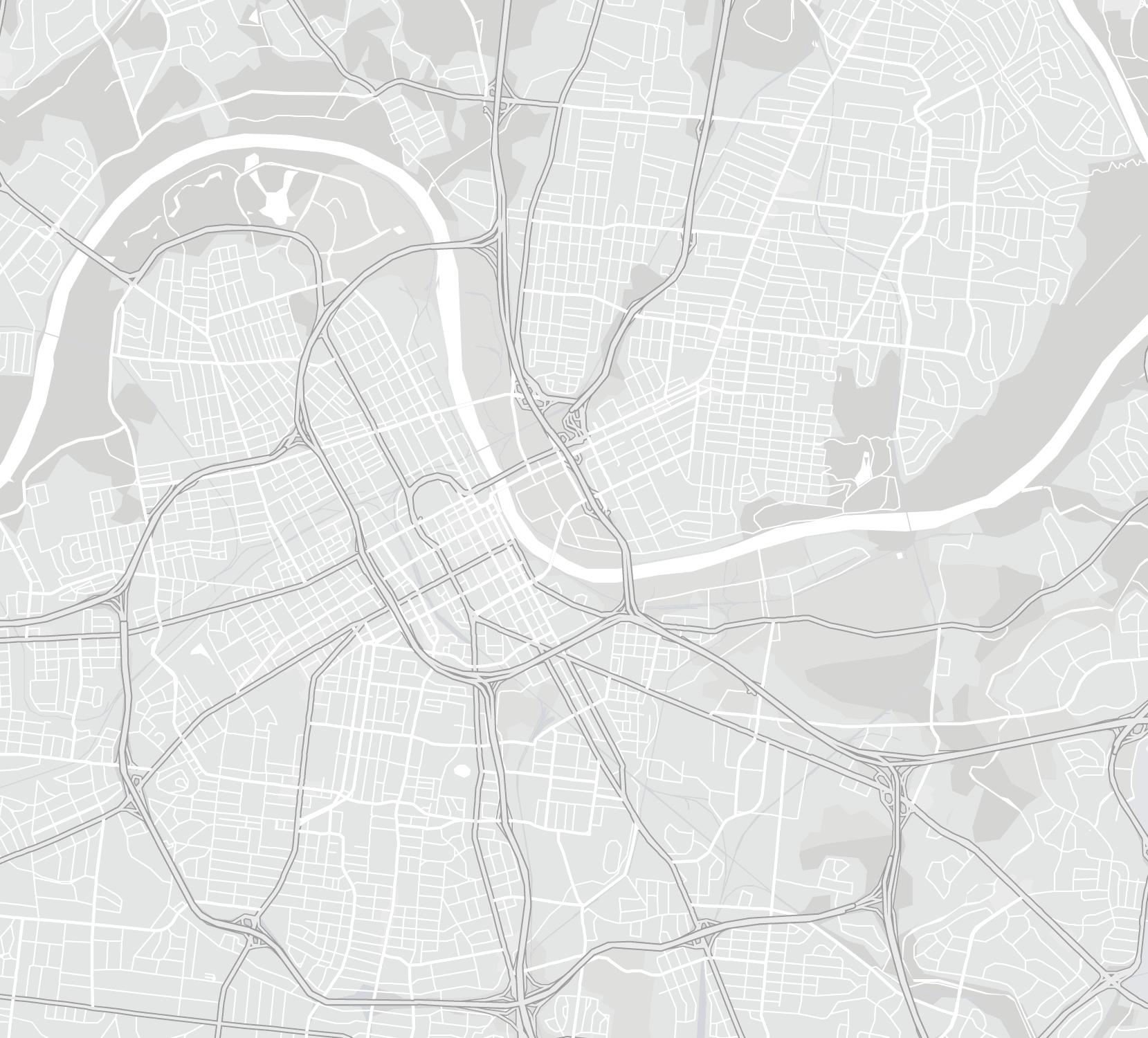
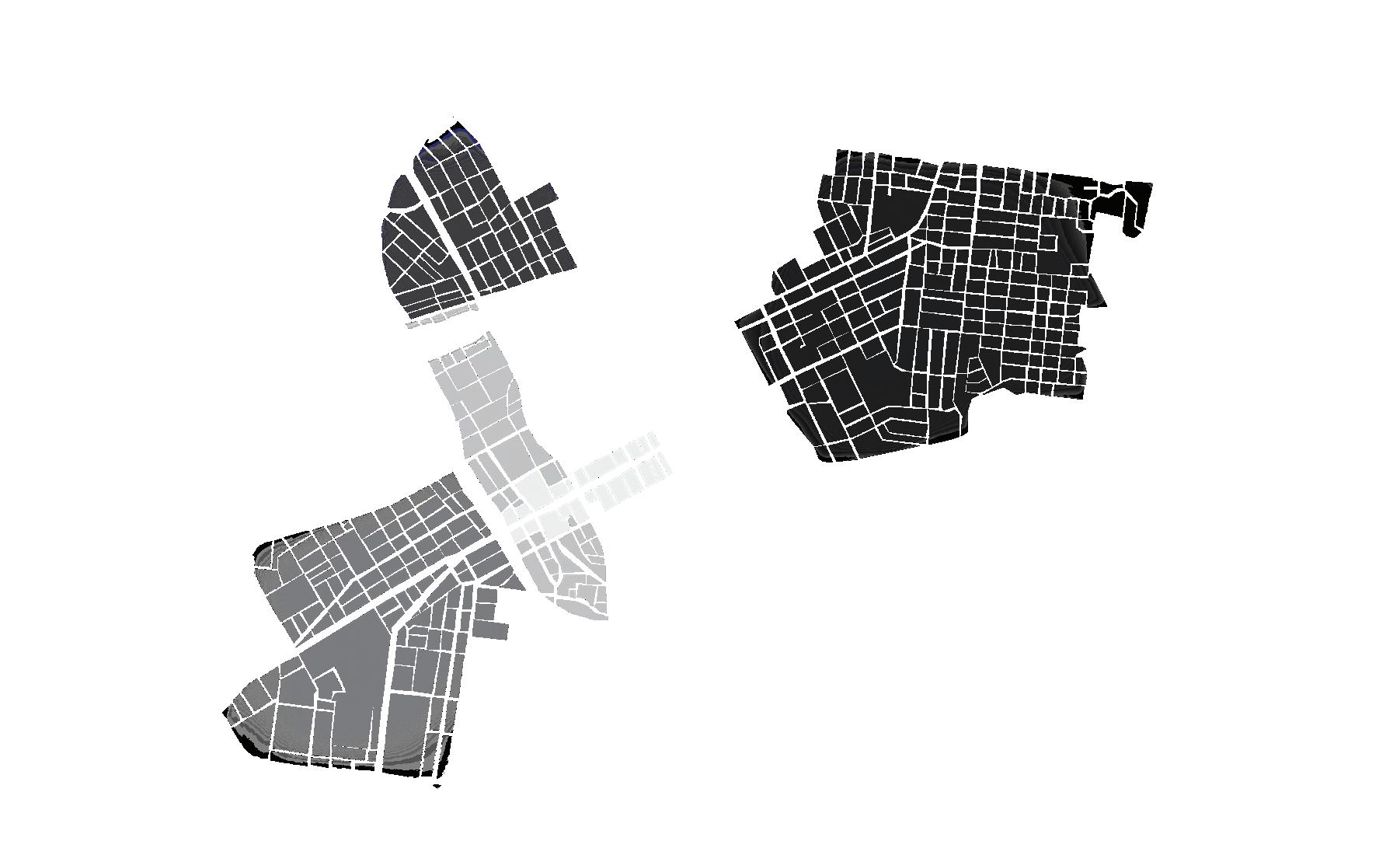
Germantown is known for its charming streets and well-preserved 19th-century architecture. Recent revitalization efforts have turned it into a trendy area with beautifully restored Victorian homes and a mix of architectural styles. Notable attractions include the adjacent Bicentennial Capitol Mall State Park, offering monuments, a state history timeline, and views of the Capitol building.
Germantown embraces Nashville’s craft beverage scene with breweries and distilleries, adding to its social and cultural vibrancy. Outdoor enthusiasts can explore the scenic Cumberland River Greenway, providing a peaceful pathway with views of the river and the Nashville skyline. Overall, Germantown has evolved into a trendy and diverse neighborhood, seamlessly blending history, culture, and culinary delights.

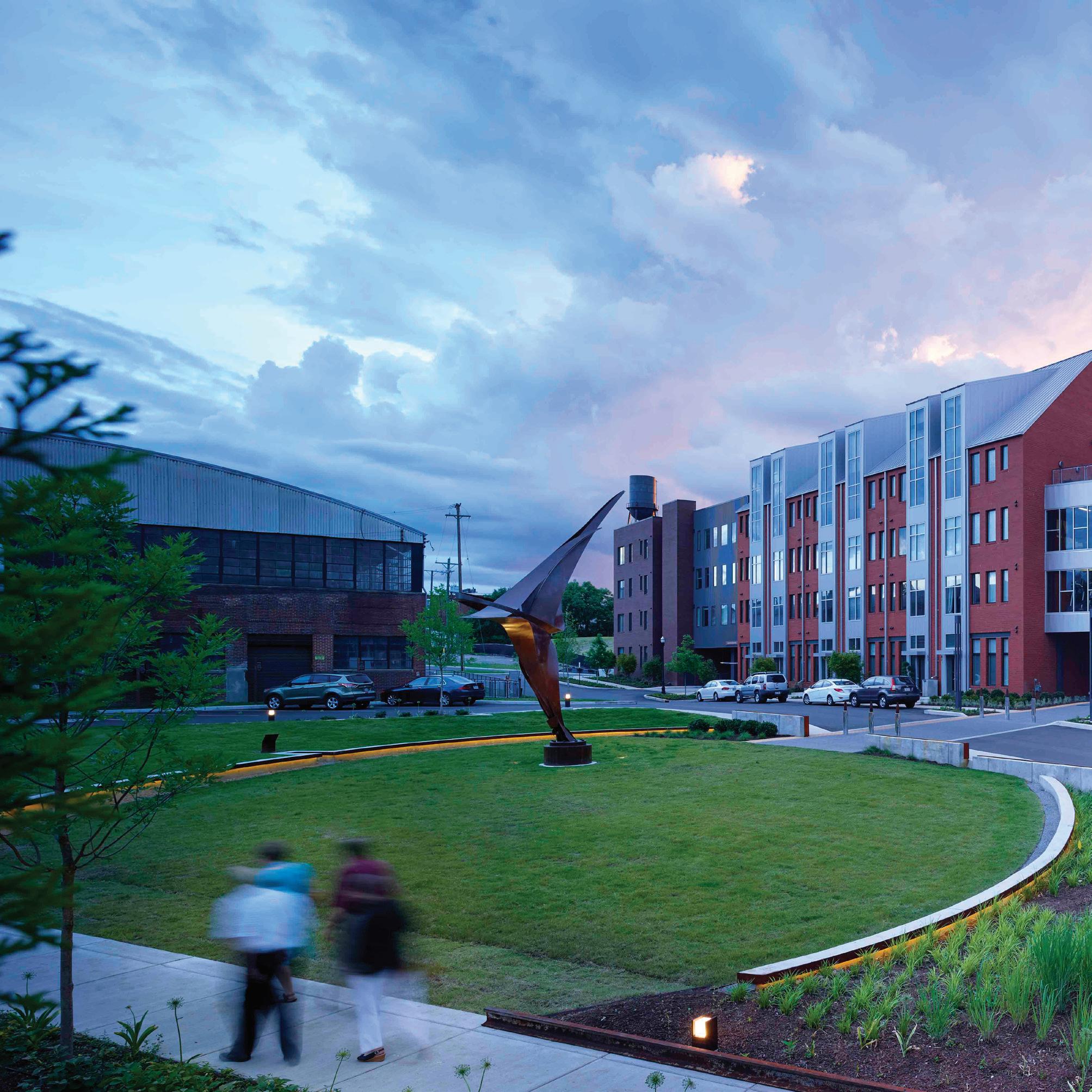

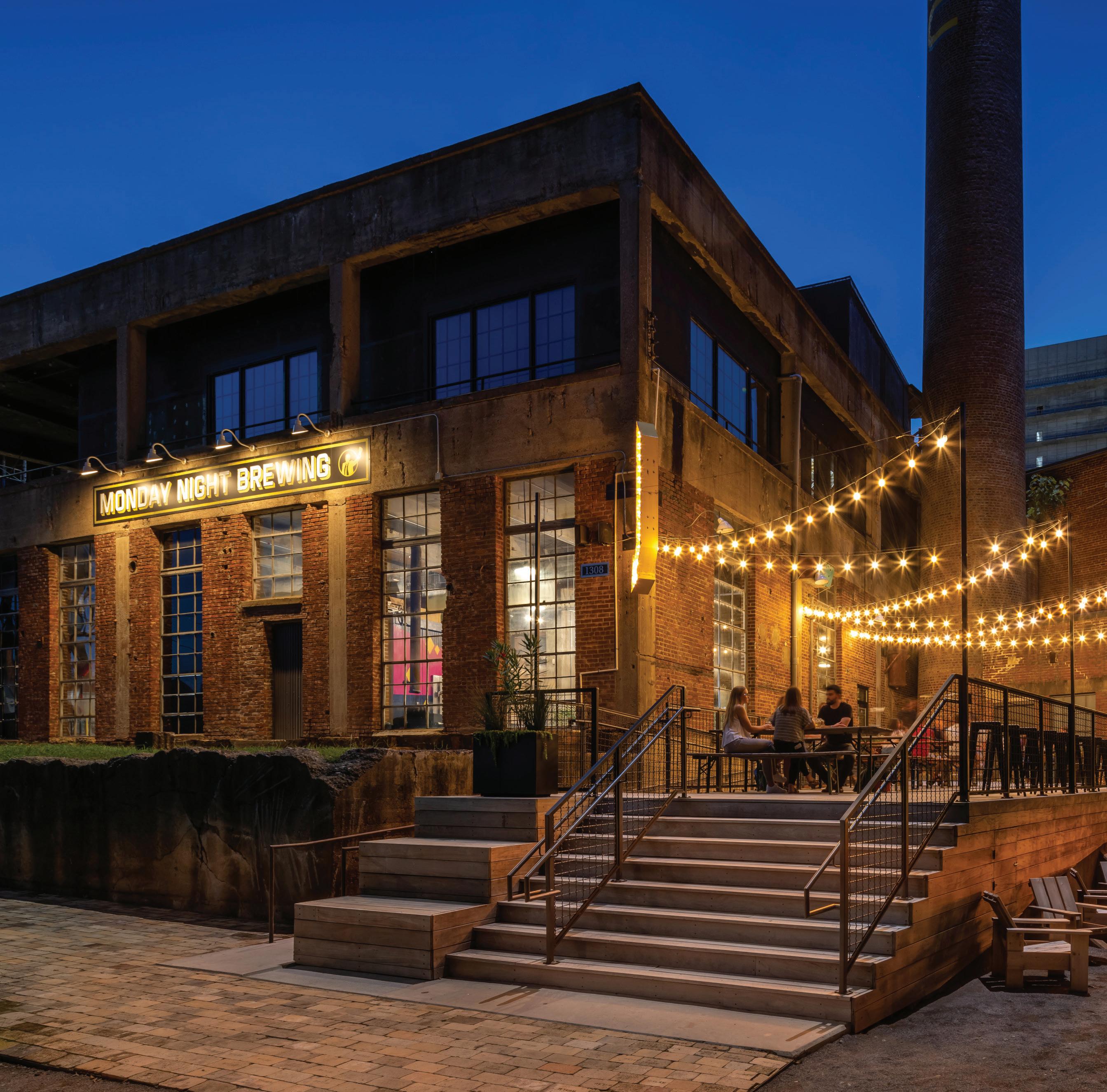
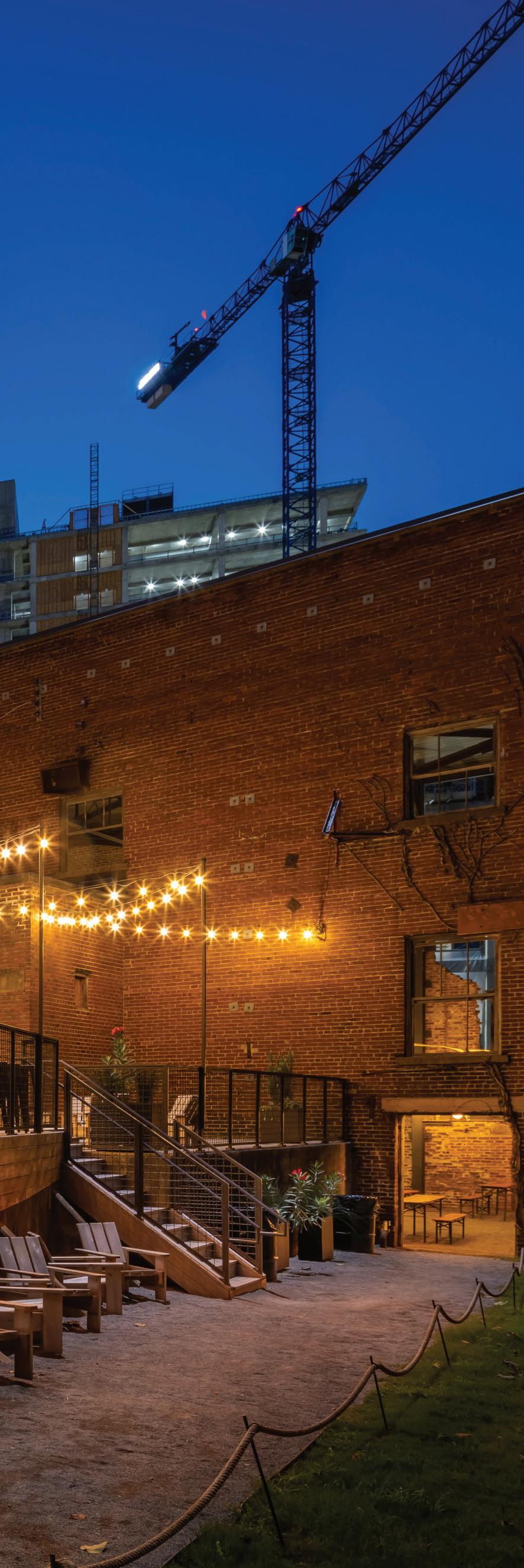
Germantown has the highest percentage of dog owners of the neighborhoods surveyed. The typical dog owner in Germantown is between 25-30 years old and lives with a partner/spouse.
Germantown residents are 7x more likely to use e-scooters than the other neighborhoods surveyed. 7%
70%
While the residents surveyed are divided on valet trash, 70% of Germantown residents would prefer this service of taking their trash to a chute.
Midtown Nashville, just west of downtown, is a vibrant neighborhood known for its lively atmosphere, diverse entertainment, and proximity to popular attractions. It features Music Row, a historic hub of the city’s music industry, and is adjacent to Vanderbilt University, adding a youthful and academic touch to the area.
To the west, Centennial Park offers a sizable urban green space with the iconic Parthenon replica, providing opportunities for outdoor activities. With its dynamic mix of cultural, educational, and entertainment experiences, Midtown is a sought-after destination for locals and visitors alike.
Due to its proximity to universities, Midtown is home to a much higher percentage of students and residents in their early twenties. Nearly 45% of Midtown residents are under 25, compared to less than 20% in all neighborhoods surveyed, and twice as many students live in Midtown.
When you consider that 43% of Midtown residents surveyed use rideshare as their main method of transportation. This reenforces the survey’s findings that Midtown consists of younger residents.
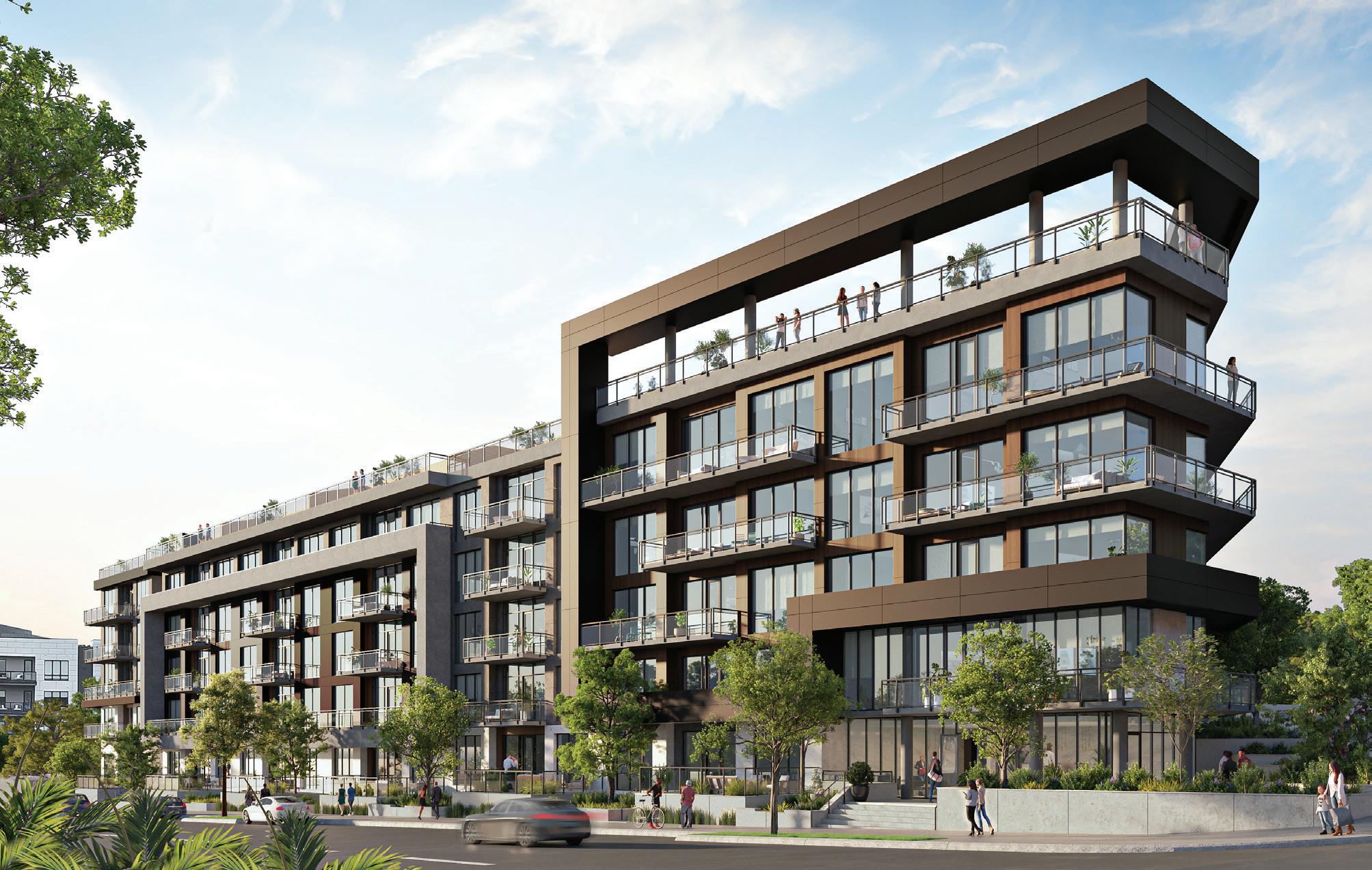
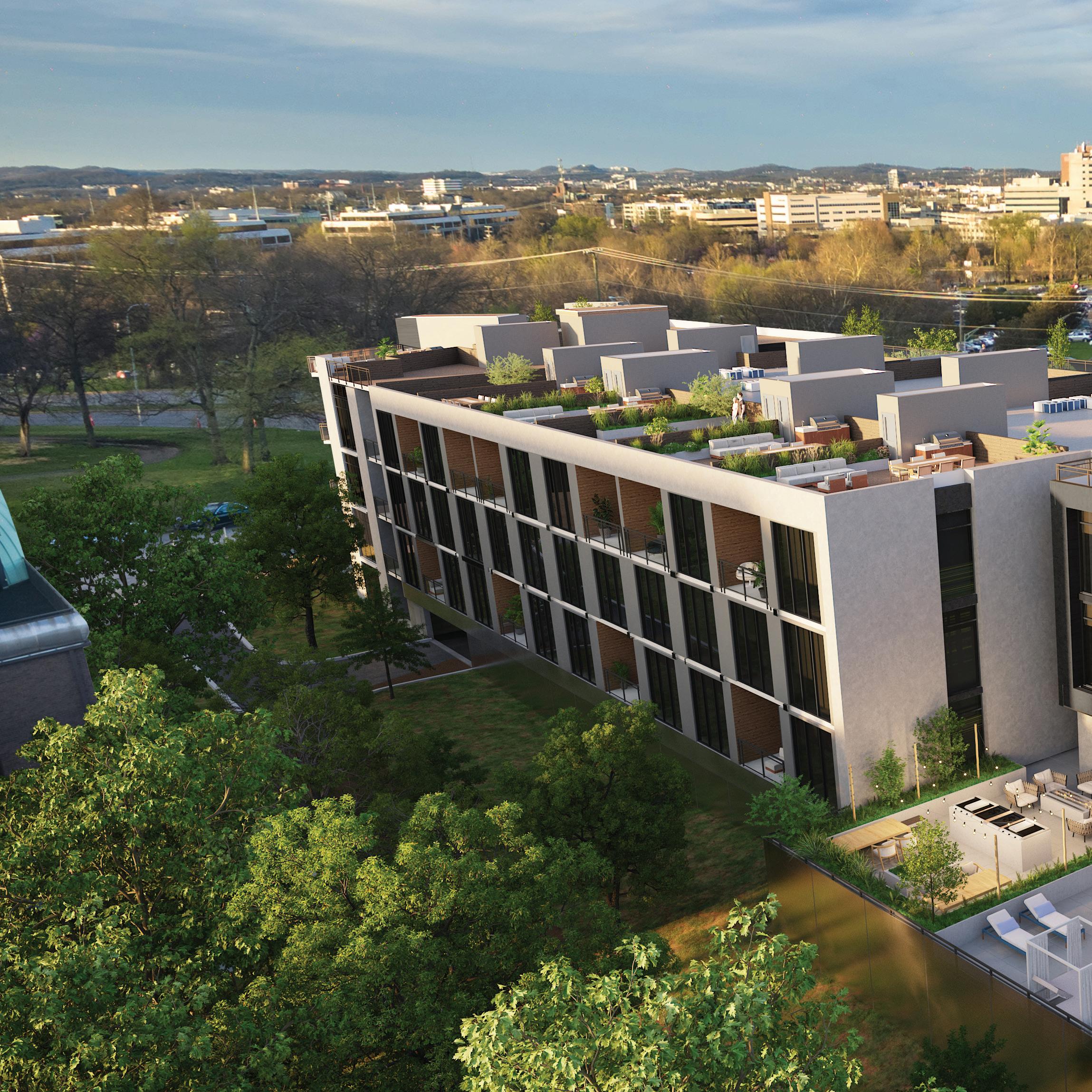



43% USE RIDESHARE AS THEIR MAIN METHOD OF TRANSPORTATION
This is almost 3x more than other neighborhoods. 43% USE THEIR CLUB ROOM AT LEAST ONCE A WEEK 57% ARE UNDER THE AGE OF 25 13% OF MIDTOWN RESIDENTS SURVEYED ARE STUDENTS
Situated just south of downtown Nashville, The Gulch has been transformed from an industrial area into a dynamic urban district known for its modern architecture, upscale living, and lively atmosphere. Characterized by sleek high-rises, stylish lofts, and contemporary commercial spaces, it has become a hub for dozens of restaurants, retail storefronts, and has become both a hub for urban living and a destination for visitors.
The neighborhood offers shopping with high-end boutiques and specialty shops, and is renowned for its diverse dining scene, ranging from gourmet cuisine to casual fare. As night falls, The Gulch comes alive with a vibrant nightlife featuring bars, lounges, and rooftop venues, making it a sought-after spot for those looking to enjoy Nashville’s entertainment after dark.
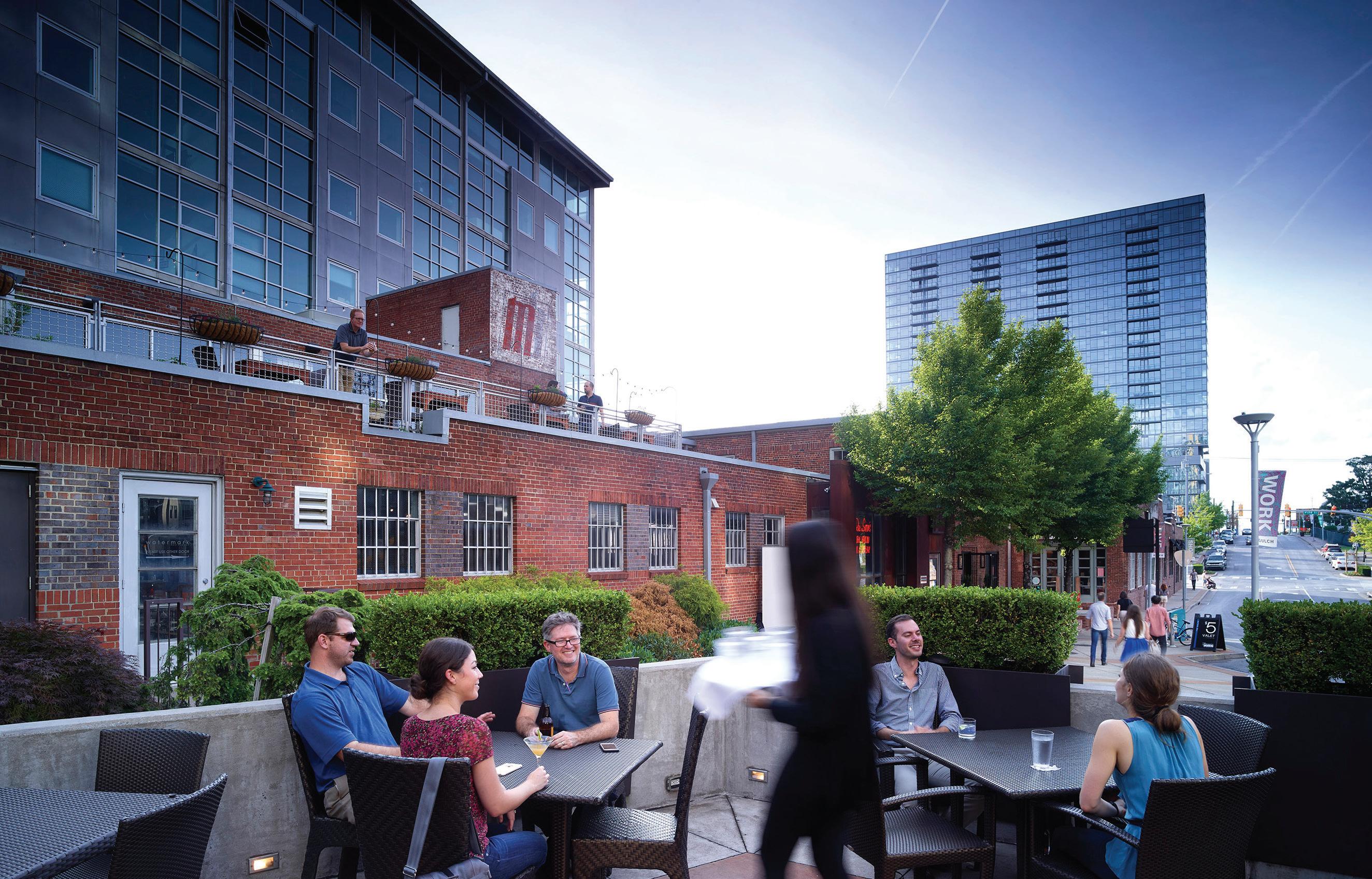
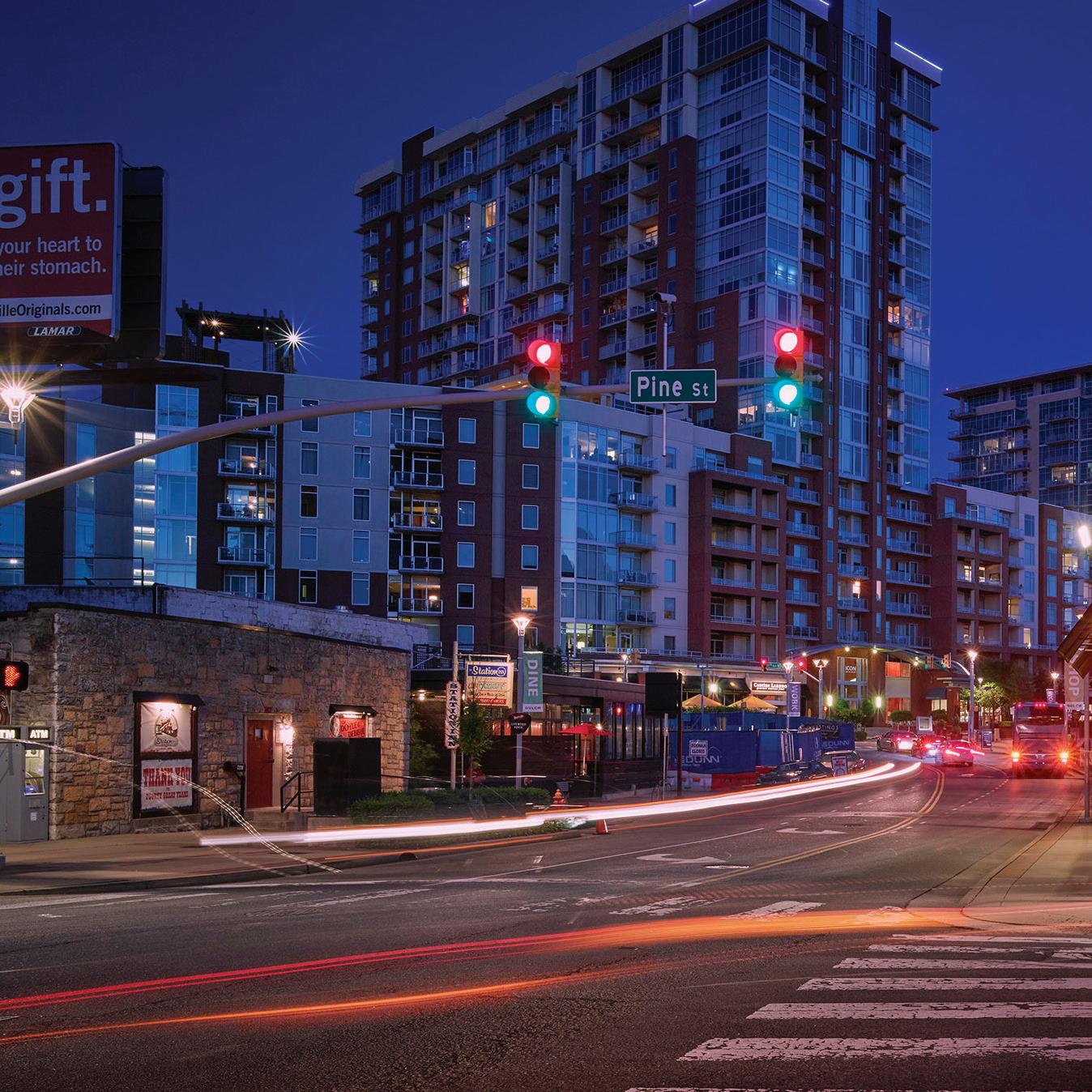

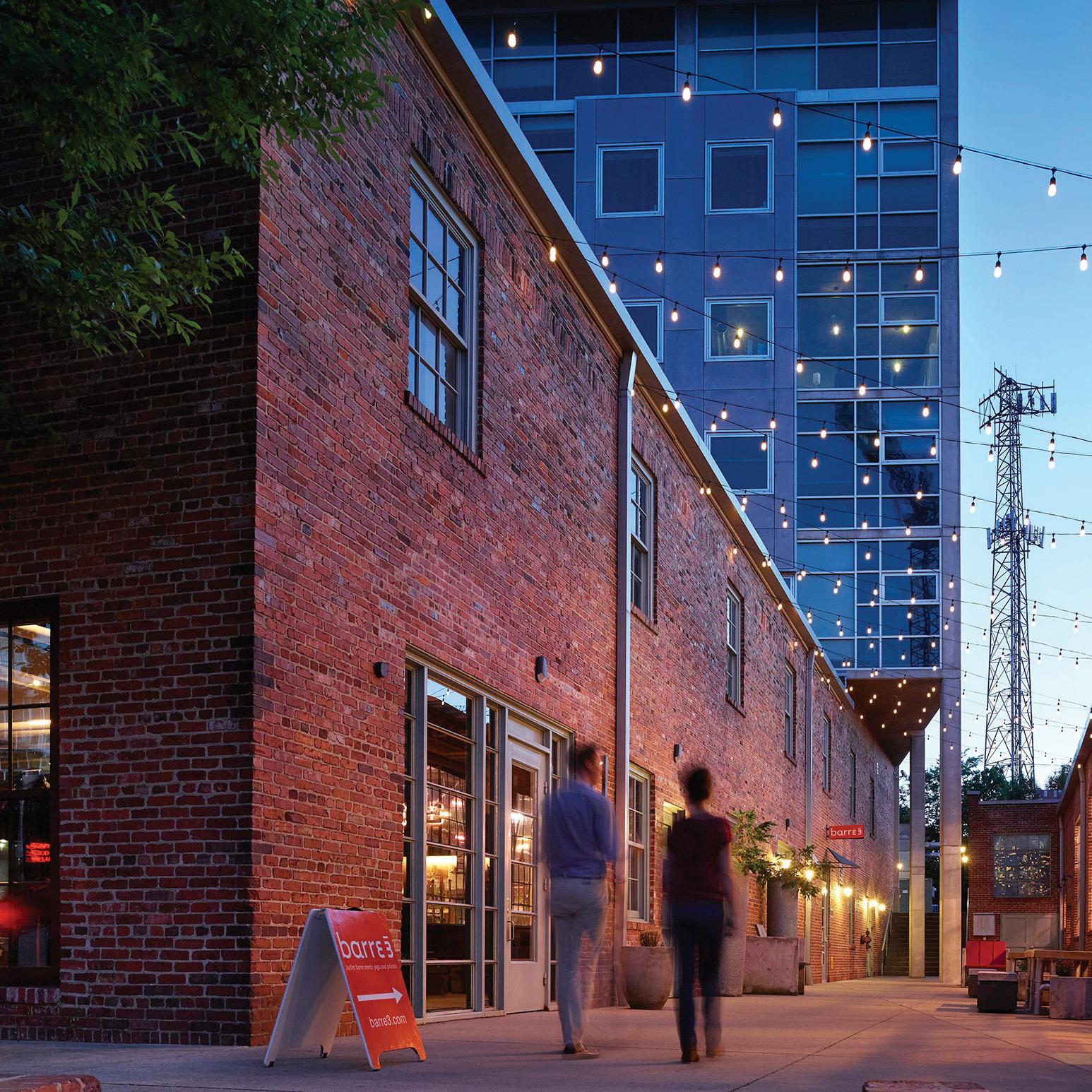

OF GULCH RESIDENTS LIVE IN A STUDIO APARTMENT 9% OF GULCH RESIDENTS NEVER USE THE GRILL STATION 45%
The Gulch has almost double the number of residents living in a studio apartment when compared to the other neighborhoods surveyed.
When asked what their most important amenities are when looking for a place to live, the Gulch residents frequently listed a coffee bar. While the coffee bar was not as important as the pool or fitness center, it was listed as more important than most other amenities.
East Nashville, located just across the Cumberland River from downtown, is a trendy neighborhood celebrated for its vibrant arts scene, historic architecture, and strong community spirit. Highlights include Five Points - the neighborhood’s bustling intersection hosting shops and community events - and a variety of unique boutiques and vintage stores.
The artistic community contributes to a lively atmosphere with galleries and murals, while well-preserved historic homes showcase Nashville’s architectural heritage. Outdoor enthusiasts can enjoy the scenic Shelby Bottoms Greenway and Nature Park along the Cumberland River, offering trails for walking, running, and biking.
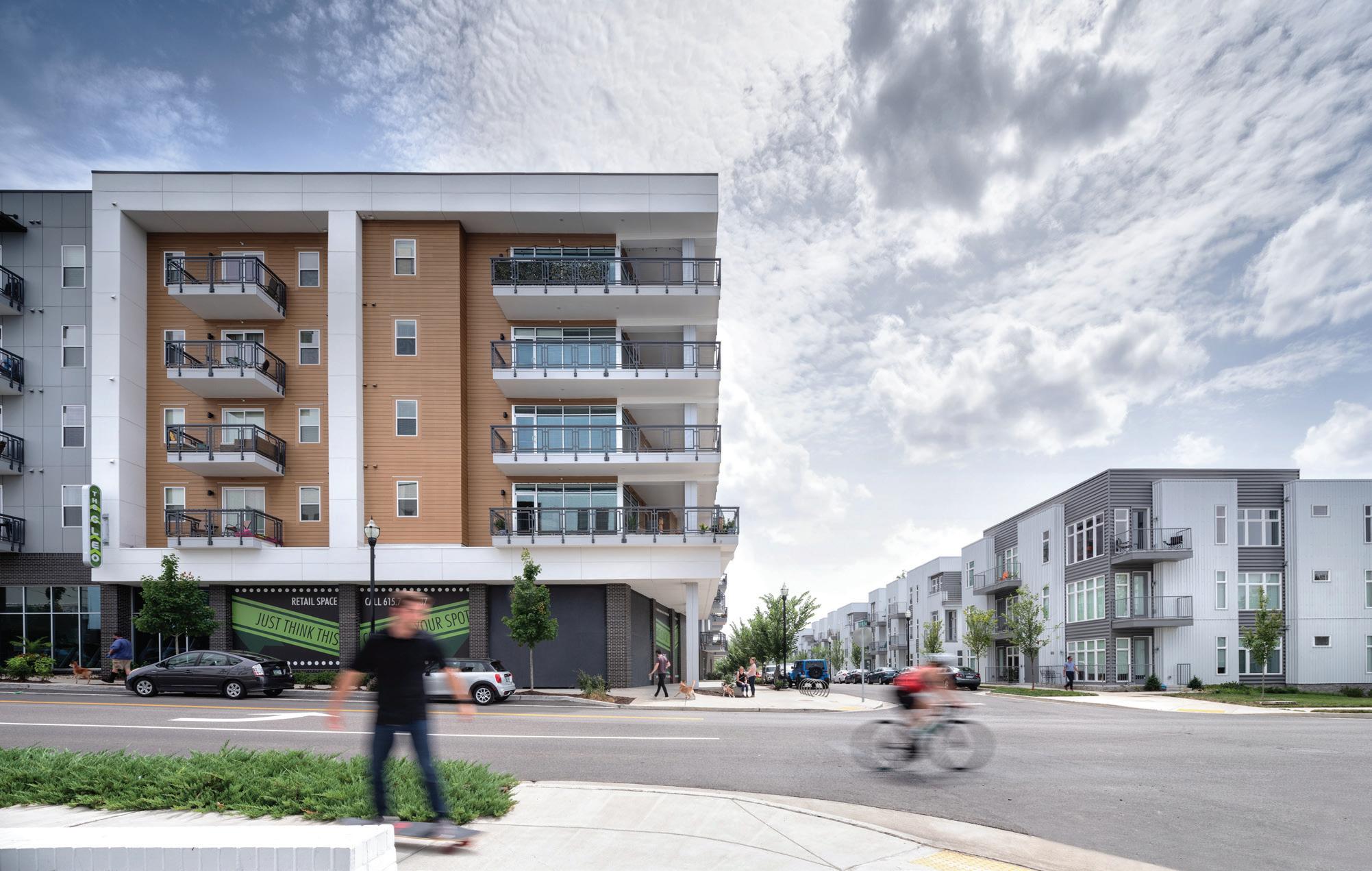




IS ONE OF THE TOP DESIRED RESIDENTIAL SERVICES
OF EAST NASHVILLE RESIDENTS PREFER A TUB/SHOWER COMBO 63% OF EAST NASHVILLE RESIDENTS LIVE IN A TWO BEDROOM UNIT 52%
Broadway, at the heart of downtown Nashville, Tennessee, is the city’s entertainment epicenter and a symbol of its vibrant country music culture. Lined with lively honky-tonk bars featuring continuous live country music, Broadway draws both locals and tourists. Nearby landmarks include the historic Ryman Auditorium, Ascend Amphitheater, and the Country Music Hall of Fame and Museum, offering rich insights into the genre’s history.
The John Seigenthaler Pedestrian Bridge provides scenic views of the city skyline, connecting downtown Nashville to Nissan Stadium.
With diverse dining options, Broadway is not just a musical hub but also a culinary destination, where visitors can enjoy meals with live music. As the central stage for Nashville’s music and entertainment, Broadway is the go-to place for those seeking a deep dive into the city’s cultural heritage.
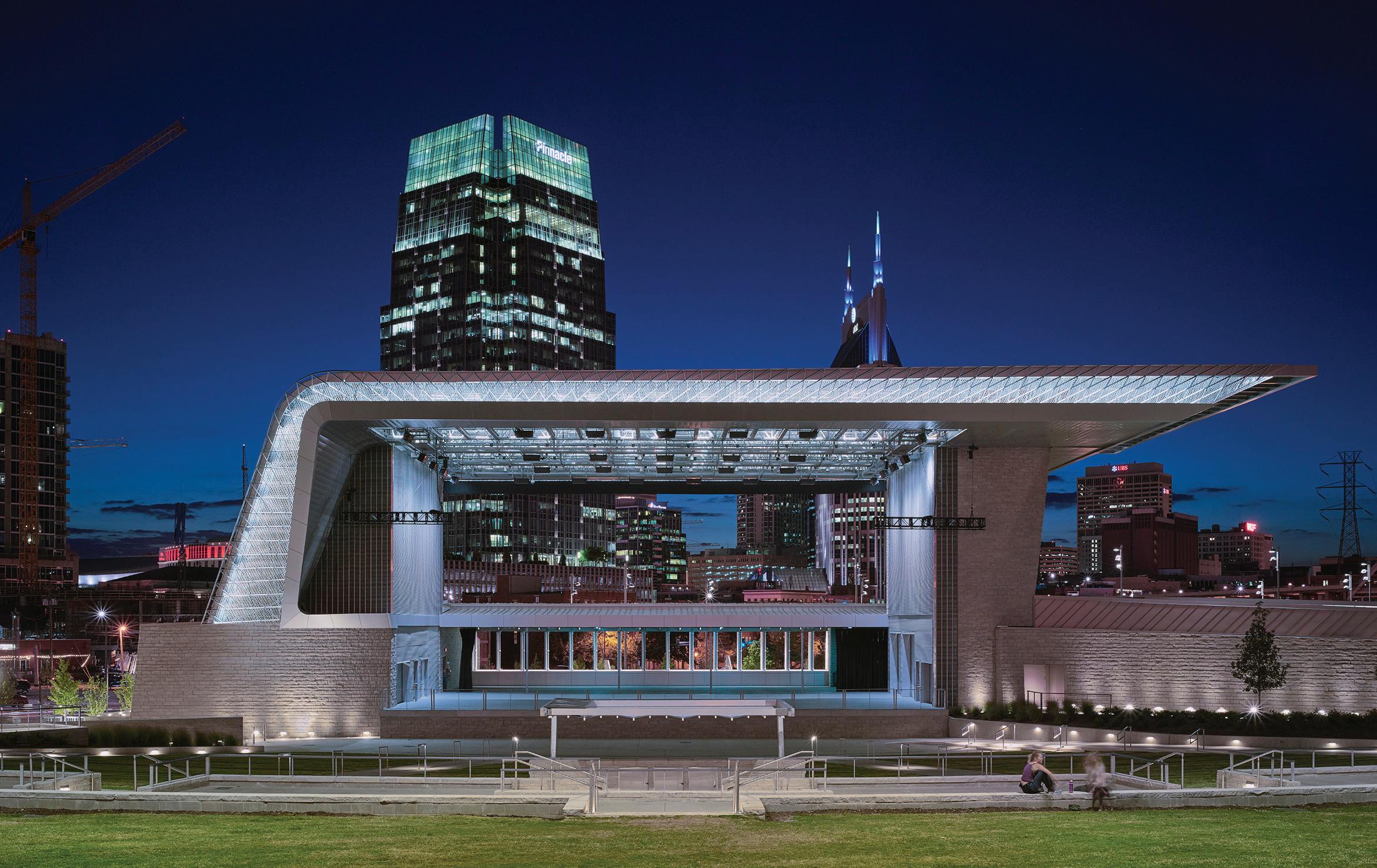

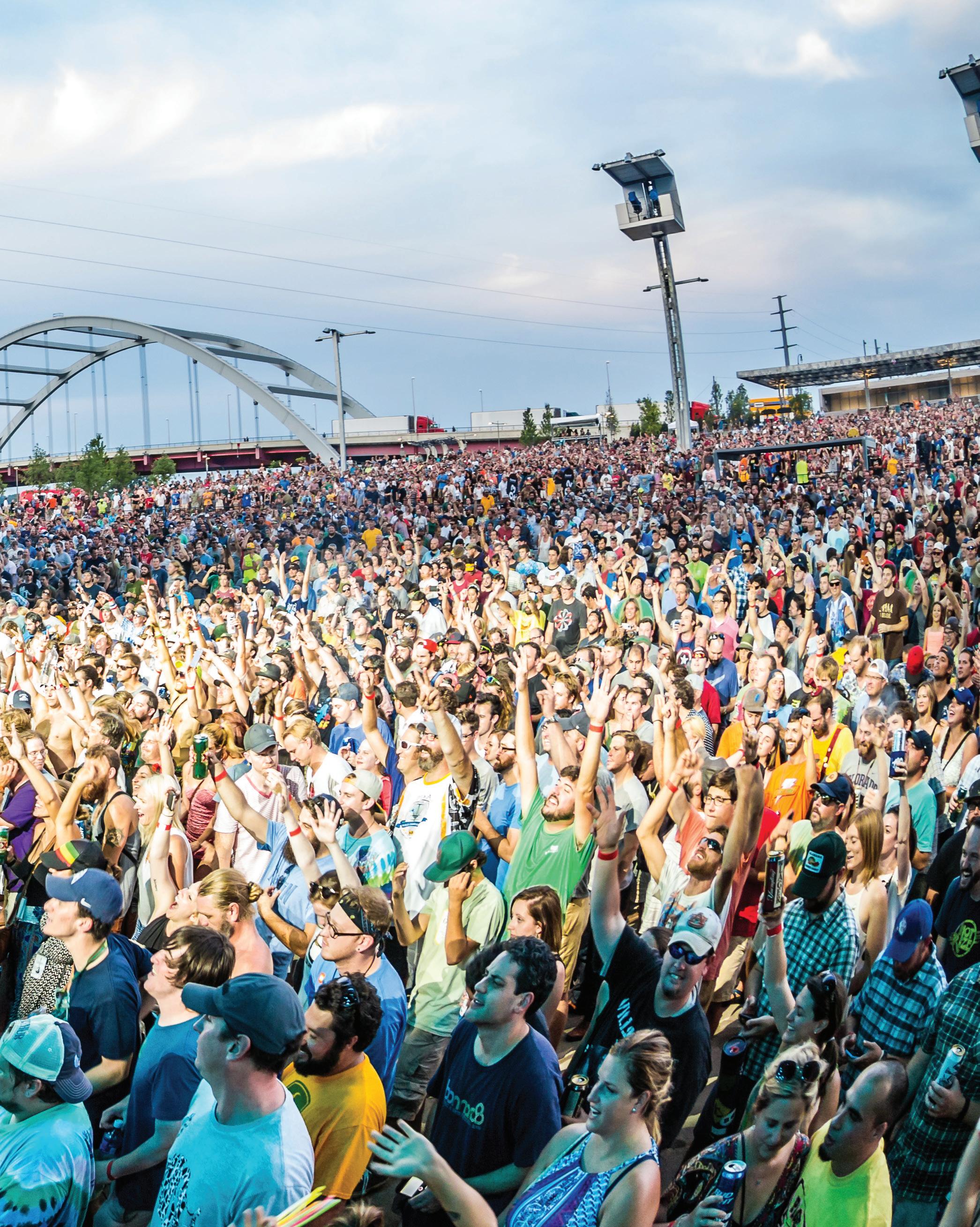
OF BROADWAY RESIDENTS ARE OVER THE AGE OF 30 70% OF BROADWAY RESIDENTS OWN AN ELECTRIC VEHICLE 11% OF BROADWAY RESIDENTS SURVEYED PREFER TO TAKE THEIR TRASH TO A CHUTE 84% When compared to only about 50% of residents in other neighborhoods.
Nashville residents are striving to maximize their resources, seeking luxury in amenities and functionality in their living spaces. Integrating commercial and retail opportunities near housing is crucial for enhancing walkability and access to daily necessities.
As homeownership becomes increasingly challenging due to low supply and high interest rates, the trend towards apartment living is likely to persist, with individuals delaying home purchases. This shift underscores the ongoing demand for housing in Nashville, where apartments continue to be a vital part of the solution.
As residents stay in their apartments longer, we’ll see the age demographic shift from mid-to-late 20-year-olds to early-to-mid 30 year-olds inhabiting these spaces. This will likely have a large impact on the needs and demands of residents as they grow within the confines of a rental community.
While we as designers can incorporate strategies based on the evolving needs of our user, the larger issue at hand, affordability, is one that will require innovative approaches from multiple parties.
Attainable housing solutions are essential, not only for those in need of subsidies but also for middle-income individuals aspiring to own. Nashville’s current growth slowdown presents an opportunity to reevaluate strategies for transit, community development, and sustainability, paving the way for holistic neighborhoods that cater to all residents’ needs.
As Nashville grows and residents’ needs evolve, its our obligation to track these market shifts in order to provide responsive, innovative solutions.
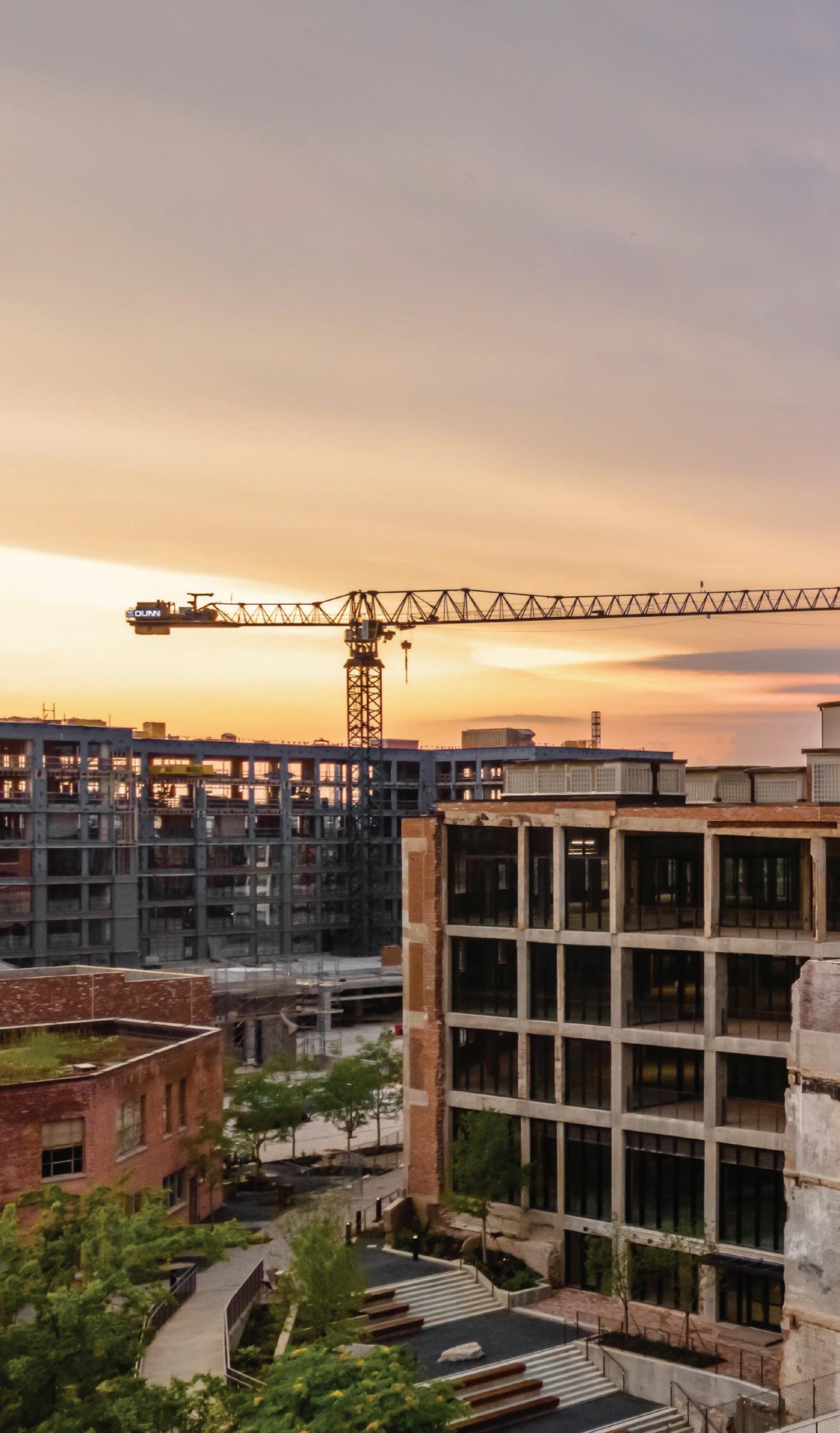 Neuhoff
Photography | Seth Parker
Neuhoff
Photography | Seth Parker
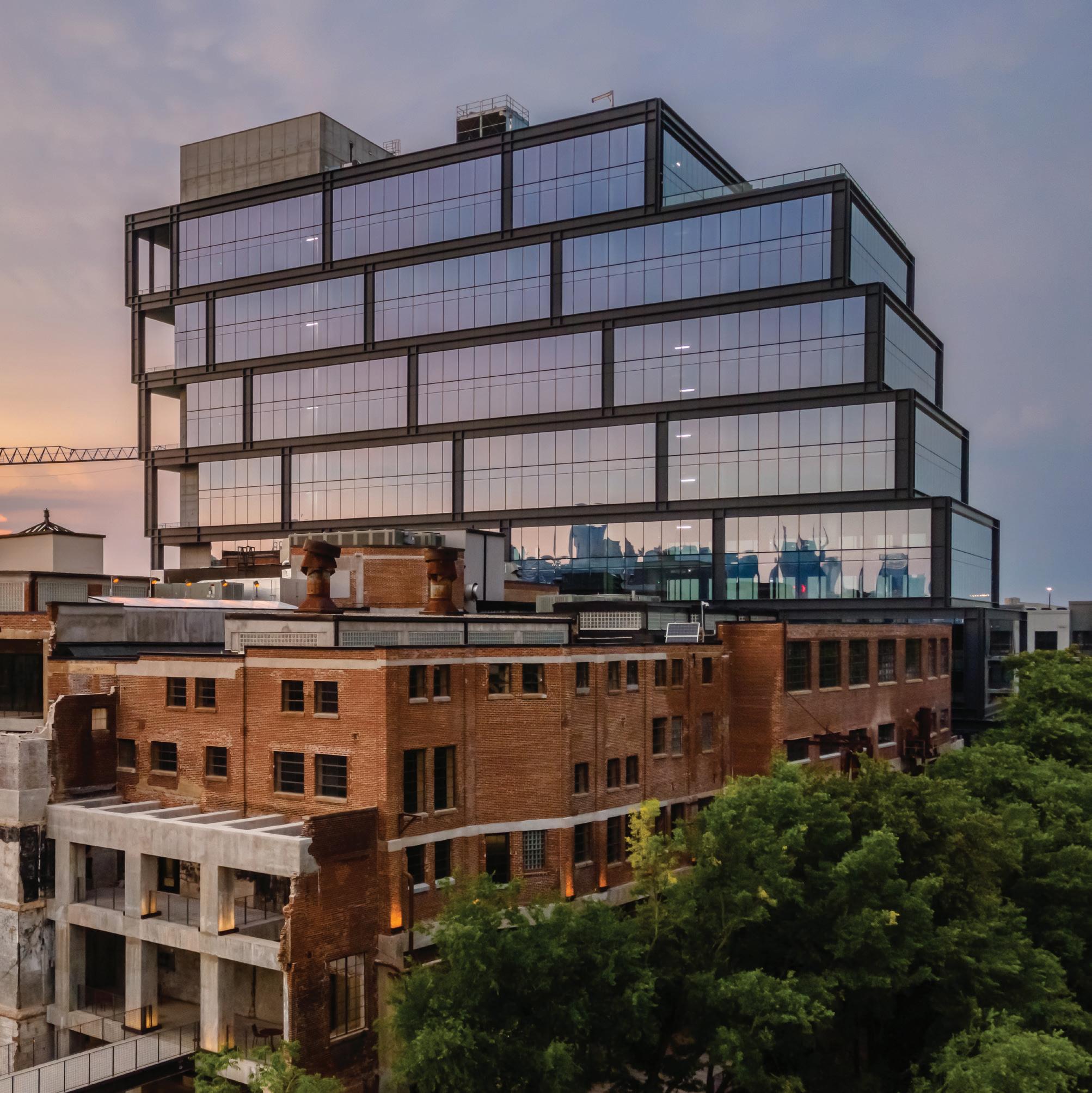
Editor-in-Chief
Lauren Miller-Wilmoth
Creative
Jay Roebuck
Kathleen Musick
Contributors
Aiden Blake
Ken Babinchak
Brett Downey
Morgan O’Brien
Kayla Rithaler
Image Credits
Matthew Carbone
Seth Parker
Taylor Wallace
McGinn Photography
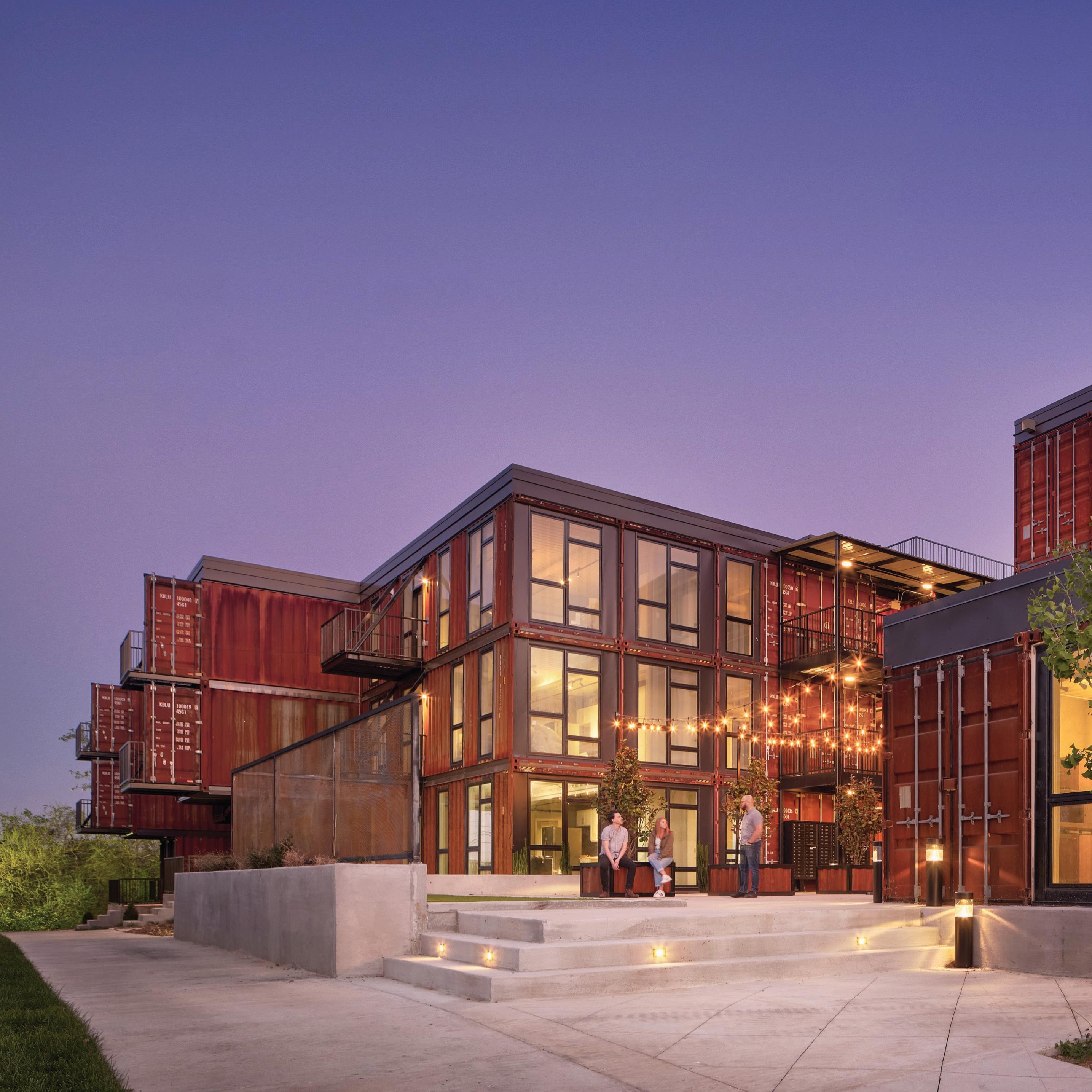
Photography | Matthew Carbone
Oversight
Hunter Gee
Jesse Wilmoth
Designers
Amber Kustaborder
Taylor Fieroh
Courtney Wainauski
Collaborators
Tammy Lee





 The Living Lowdown bi-annual report is property of Smith Gee Studio, LLC. This information was curated through a partnership with Willow Bridge Property Company and their managed properties.
The Living Lowdown bi-annual report is property of Smith Gee Studio, LLC. This information was curated through a partnership with Willow Bridge Property Company and their managed properties.